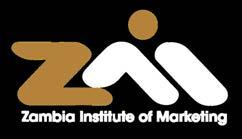










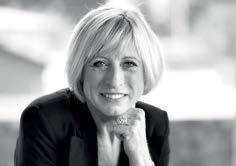
marketers! With our 4th AMC Annual Conference imminent, we have been working tirelessly to bring you an even better experience than before. For example, the AMC Marketing Awards 2025 promises a marvellous evening of glitz and glory, with the winners announced at the final night Gala Dinner. Good luck to the entrants!







Some exciting news is that we are launching an AMC Tourism Chapter alongside the upcoming conference. This is part of our Destination/ Tourism Marketing initiative, together with colleagues from UN Tourism Brand Africa.
Staying with tourism, I recently had the pleasure of participating in a panel
discussion at the 2nd UN Tourism Regional Forum on Gastronomy Tourism for Africa in Tanzania. Our topic was ‘Branding Africa Through its Gastronomy’. The feedback was positive and the traditional feasts from different countries were wonderful!
Marketing unique nation brands is key for tourism ›
I also joined an equally well-received panel discussion at the Zambia Travel Expo (ZATEX) gathering in Lusaka. We believe that by helping African nations to market their unique country
2025 AMC Conference in Ghana: 20-22 August! See you there!
brands, the continent will grow and develop. It is now time to put African marketing front and centre on the global stage!
Other international collaborations are also bearing fruit. Alongside the Asia Marketing Federation and European Marketing Confederation, we are driving four projects that will add value to our members. These include a global mapping of marketing qualifications and a Global Marketer of the Year Award. Your input will be essential, so watch this space! See you in Accra, Helen McIntee-Carlisle BA MBA (Wits) CM (SA) Co-founder and President: African Marketing Confederation
MESSAGE DU PRÉSIDENT DE LA CONFÉDÉRATION AFRICAINE DU MARKETING

occuper une place centrale sur la scène mondiale
BONJOUR CHERS SPÉCIALISTES DU marketing ! À l’approche de notre 4e conférence annuelle de l’AMC, nous avons travaillé sans relâche pour vous offrir une expérience encore meilleure qu’auparavant. Par exemple, les AMC Marketing Awards 2025 promettent une merveilleuse soirée de paillettes et de gloire, avec les gagnants annoncés lors du dîner de gala de la soirée finale. Bonne chance aux participants !
Une nouvelle passionnante est que nous lançons un chapitre AMC Tourisme en parallèle de la prochaine conférence. Cela fait partie de notre initiative de marketing de destination / tourisme, en collaboration avec nos collègues de Marque touristique de Nations Unies pour l’Afrique.
Toujours dans le domaine du tourisme, j’ai récemment eu le plaisir de participer à une table ronde lors du 2e Forum régional des Nations Unies sur le tourisme gastronomique pour l’Afrique qui s’est déroulé en Tanzanie. Notre thème était le Branding de l’Afrique à travers sa gastronomie. Les retours ont été positifs et les fêtes traditionnelles de différents pays étaient magnifiques !
J’ai aussi participé à une table ronde tout aussi bien accueillie lors du rassemblement Zambia Travel Expo (ZATEX) à Lusaka.
Nous pensons qu’en aidant les nations africaines à commercialiser leurs marques nationales uniques, le continent va grandir et se développer. Il est maintenant temps de mettre le marketing africain au premier plan sur la scène mondiale !
D’autres collaborations internationales portent aussi leurs fruits. Aux côtés de l’Asia Marketing Federation et de la European Marketing Confederation, nous menons quatre projets qui apporteront une valeur ajoutée à nos membres. Il s’agit notamment d’une cartographie mondiale des qualifications en marketing et d’un prix du spécialiste mondial du marketing de l’année. Votre contribution sera essentielle, alors surveillez cet espace !
Rendez-vous à Accra,
Hélène McIntee-Carlisle BA
MBA (Wits) CM
(SA) Co-fondatrice et Présidente : Confédération africaine du marketing
marketing africano na vanguarda e no centro da cena mundial
BOM DIA, COLEGAS DE MARKETING! COM A iminência da nossa 4ª Conferência Anual da AMC, temos trabalhado incansavelmente para lhe proporcionar uma experiência ainda melhor do que a anterior. Por exemplo, o AMC Marketing Awards 2025 promete uma noite maravilhosa de brilho e glória e os vencedores serão anunciados no jantar de gala da noite final. Boa sorte aos participantes! Uma notícia fantástica é o facto de estarmos a lançar um Capítulo de Turismo da AMC a par da próxima conferência. Esta iniciativa faz parte da nossa iniciativa de Marketing do Destino/Turismo, juntamente com colegas da Marca África do Turismo da ONU.
Continuando com o turismo, tive recentemente o prazer de participar num painel de discussão no 2º Fórum Regional de Turismo da ONU sobre Turismo Gastronómico para África, na Tanzânia. O nosso tema foi Promover África através da sua Gastronomia. O feedback foi positivo e as festas tradicionais de diferentes países foram maravilhosas!
Também participei num painel de discussão igualmente bem recebido na Zambia Travel Expo (ZATEX), em Lusaca. Acreditamos que, ao ajudar as nações africanas a promover as suas marcas nacionais únicas, o continente crescerá e irá desenvolver-se. Chegou o momento de colocar o marketing africano no centro da cenário mundial! Outras colaborações internacionais estão também a dar frutos. Juntamente com a Federação Asiática de Marketing e a Confederação Europeia de Marketing, estamos a conduzir quatro projectos que trarão valor acrescentado aos nossos membros. Estes projectos incluem um mapeamento global das qualificações de marketing e um Prémio Global Marketer of the Year. O seu contributo será essencial, por isso, esteja atentos a este espaço!
Vemo-nos em Acra,
Helen McIntee-Carlisle
BA MBA (Wits) CM (SA) Cofondateur et président : Confédération africaine du marketing

PUBLISHER
African Marketing Confederation
https://africanmarketingconfederation.org info@africanmarketingconfederation.org
PUBLISHING COMMITTEE
Kwabena Agyekum (Chair)
Helen McIntee-Carlisle
Nigel Tattersall
Mike Simpson
A.M.C. PRESIDENT
Helen McIntee-Carlisle
A.M.C. SECRETARY GENERAL
David Balikuddembe
EDITORIAL
Simpson Media
Editor: Mike Simpson
mike@media-simpson.com
ADVERTISING SALES & COORDINATION
Avenue Advertising
Managing Director: Barbara Spence
Landline: +27 11 463 7940
Mobile: +27 82 881 3454 barbara@avenue.co.za
DESIGN & LAYOUT
Tamlin Lockhart Design tamlin@tamlinlockhart.co.za
PRODUCTION
Reproduction: Tamlin Lockhart Design Digital magazine: Belgium Campus Print magazine: Business Print
IN ASSOCIATION WITH Angola Marketing Network
Chartered Institute of Marketing, Ghana
Ethiopian Marketing Professionals’ Association Institute of Marketing in Malawi
Institute of Marketing & Management, Mauritius
Institute of Marketing Management, South Africa
L’Association Marocaine de Marketing et de la Communication
L’association Tunisienne des Professionnels de Marketing et de la Communication
Marketing Association of Botswana
Marketers Association of Zimbabwe
Marketing Society of Kenya
Mozambique Marketing Association
National Institute of Marketing of Nigeria
Tanzania Marketing Science Association
Uganda Marketers Society
Zambia Institute of Marketing
2025 AMC Conference in Ghana: 20-22 Augus t! See you there!
GREETINGS AND welcome to another issue of the magazine for well-informed marketing professionals on the continent!
We’re proud to point out that this is a bumper 80-page issue – our biggest yet. It reiterates our ambition to bring you the best and most comprehensive coverage possible of African marketing and its related professions. You may also have noticed that we’re gradually expanding our non-English coverage in the magazine to better serve our marketing colleagues whose language of choice is French or Portuguese. In this issue we have dedicated 14 pages to French/Portuguese content and aim to increase that still further.
Could we eventually have dedicated other-language editions of Strategic Marketing for Africa? Given the explosive growth and dynamism of the African Marketing Confederation, I wouldn’t bet against it!
In this magazine you will, unsurprisingly, see plenty of mentions of the upcoming AMC Conference 2025. As an editor and journalist, I’m extremely excited about the possibilities for thoughtleadership content that this forum is going to provide. At the time of closing off this issue – eight weeks ahead of the conference – not every detail had been finalised. But we’ve sought to give you a foretaste of what’s to come in Accra. See pages 1 and 10-13 for more information.
It’s difficult to highlight individual articles from this issue as all, I believe, have their merits and relevance to our audience. But let me try. Our cover story on how African consumers are increasingly seeking health and wellbeing in their daily lives is one that certainly deserves a thorough read. Apart from being a very positive development for the continent, this trend also presents many potential business, marketing and product-development opportunities. See pages 14-19. Another story that held my attention is the supply chain article on the remarkable level of development taking place at ports across the continent. Without efficient logistics and an effective supply chain strategy, many of our marketing efforts would come to nought, of course.
It’s an area where Africa has long struggled to meet global benchmarks, so I was gratified to discover the scale of development and investment happening across the continent. Read about some of them on pages 52-55.
Remember that this is your AMC magazine. We are always keen to showcase what our members are doing, so please keep the information coming. We appreciate you joining us for this latest issue of Strategic Marketing for Africa, courtesy of the African Marketing Confederation. Hope to see you soon in Accra for another epic conference! Mike Simpson Editor
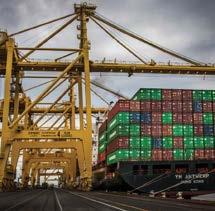





Confederation is the groundbreaking pan-African body of marketing professionals spearheading the ongoing development of the highest possible standards of marketing across Africa. Founded in 2011, the AMC is a collaboration between the various national marketing bodies and
The AMMC (English name: Moroccan Association of Marketing and Communications) was created in 2013 as a platform for the country’s marketing and communication communities. Its aim is to promote the professions, develop the skills and knowledge of members, and promote the economy of Morocco.
Visit Facebook page

MARKETING ASSOCIATION OF BOTSWANA
The Marketing Association of Botswana (MAB) is dedicated to empowering marketing professionals, fostering industry growth, and shaping marketing’s future in Botswana. It exists to unite marketing leaders, strategists and creatives under one dynamic network. It also aims to elevate standards through knowledgesharing, mentorship and learning, as well as advocate for marketing’s strategic role in driving growth. Visit LinkedIn page.
More information coming soon!

associations to exchange expertise and information, as well as to promote the marketing profession as a whole. By unifying the bodies in the various countries, the AMC exchanges expertise and information, provides intellectual capital, and ensures that the continent has a platform for like-minded marketing professionals.
Uganda Marketers Society is the premier organisation for marketers in the country, dedicated to promoting excellence in the field. UMS provides a range of resources and opportunities for skill-building, so members can stay up-to-date with the latest trends and best practices in marketing. We help members become the best marketer they can be.
Visit Website

MSK is the national umbrella body for all marketers in Kenya. Its key mandate is to empower and regulate the marketing industry by creating policy that governs the Marketing Industry (self-regulated), education and training of professionals, corporates and entrepreneurs, marketing and business mentorship, and arbitration through the Advertising Standards Board.
Visit Website

TANZANIA MARKETING SCIENCE ASSOCIATION
The Tanzania Marketing Science Association is a one-voice platform which harmonises the knowledge and practice of marketing in Tanzania. TMSA’s aim is to achieve a strong marketing professional ecosystem in Tanzania by driving collaboration between industry and marketing experts. Its services include professional training programmes, ranging from certified to professional marketer.
Visit website
Established in 2012, the aim of the ATPMC (English name: Tunisian Association of Marketing and Communications Professionals) is to offer the country’s marketing and communications professionals privileged access to a network of colleagues and high-level industry experts. It also promotes the image of marketing and communications in Tunisia. Visit website
NIMN was established by Act of the National Assembly no. 25 of 2003 with a chartered status conferred on it, the responsibility to regulate and standardise marketing professional practice through the conduct of professional examinations and certifications, training, retraining and consultancy services geared towards ensuring that members adopt a professional approach to marketing.
Visit Website

The Chartered Institute of Marketing, Ghana was founded in July 1981 with the vision to be the voice of marketing practice in Ghana. The Chartered Institute of Marketing, Ghana (CIMG) ultimately aims to see organisations (both private and public) embrace the marketing concept, and be marketingoriented in their operations.
Visit Website

The Institute of Marketing Management South Africa (IMM) has for decades been the pre-eminent marketing institute in Southern Africa, bringing together likeminded individuals and organisations to share thoughts and experiences within the rapidly changing marketing environment. The IMM Institute offers a range of activities and services for industry professionals.
Visit Website

ETHIOPIAN MARKETING PROFESSIONALS’ ASSOCIATION
The Ethiopian Marketing Professionals’ Association is a beacon of marketing excellence, officially recognised and licensed by the Ministry of Justice under Proclamation No. 621/2009. The EMPA’s goal is ambitious but tangible: To emerge as Africa’s leading marketing association and catalyse engagement, education, inspiration, and the training of exceptional marketing professionals. Visit Website

ZAMBIA INSTITUTE OF MARKETING

The Marketers Association of Zimbabwe was launched in 2007 with a vision to be a leading body of marketing professionals promoting professionalism of the highest standards, and establishing channels of career development for the benefit of organisations and the Zimbabwean economy at large. Visit Website

Established in 1991, the Institute of Marketing & Management is the leading professional marketing education and training institution of Mauritius.
No Website

The Zambia Institute of Marketing is a professional marketing institution that was established by an Act of Parliament No. 2 of 2022 to regulate, promote, uphold and improve the standards of training, practice and professional competence of persons and organisations engaged in marketing and advertising in Zambia. Visit Website

MOZAMBIQUE MARKETING ASSOCIATION (MMA)
The Mozambique Marketing Association (MMA) was established in 2024 and is dedicated to the development and promotion of marketing practices in Mozambique. MMA’s mission is to promote excellence in marketing and contribute to the development of the sector, providing assistance, training and resources to professionals, and serving as a platform for networking and knowledge exchange.

INSTITUTE OF MARKETING IN MALAWI
IMM Malawi is a locally recognised and registered marketing body, whose agenda is to promote, enhance, and regulate the marketing profession in Malawi, with the aim of developing marketers into positions of influence. IMM Malawi started in January 2021, transitioning from the Chartered Institute of Marketing (CIM) Malawi.
Visit Website



Exploring Trust, Trends, & Technology




Hosted
500+ Delegates Attended 35+ Nations Represented 50+ Globally Renowned Speakers
This year's conference will explore the key forces set to define the future of African marketing.
Learn to Foster Long-Term Brand Trust
In an era where consumers demand authenticity and transparency, building and maintaining brand trust is crucial. Learn from industry experts on how to foster long-term brand trust and customer loyalty.
Stay ahead with insights into Africa’s evolving market dynamics, cultural shifts, and changing consumer preferences. Discover how leading brands adapt to remain relevant and competitive in this fast-changing environment. Discover the Latest Marketing Trends
Explore Tech’s Role in Modern Marketing
With AI, automation, and digital transformation reshaping the industry, the link between marketing and technology has never been stronger. Explore how emerging technologies and data-driven strategies drive growth and boost engagement.
Hosted by








It’s all systems go for marketing
Excitement and anticipation as Accra prepares to bid a warm ‘akwaaba’ (‘welcome’) to the AMC Conference 2025 and 2025 TICON Africa Conference delegates.
WE’RE ALL SET FOR the African Marketing Confederation and Technology Information Confederation Africa conferences taking place simultaneously in Accra, Ghana from 20-22 August.
A well-attended launch event in Accra set the scene for what will be a thought-leadership extravaganza examining the latest trends, developments and future directions of the marketing and information technology sectors in Africa.
Host associations for 2025 are the Chartered Institute of Marketing, Ghana and the Institute of ICT Professionals, Ghana.
Held concurrently but with largely separate agendas and speakers, the conferences recognise the growing convergence of the marketing and IT sectors in the age of AI, the metaverse, digital strategies and big data.
The theme for the marketing conference is ‘Thriving in Africa’s Evolving Markets: Trust, Trends & Technology’, while the theme for the technology gathering is ‘Empowering Africa’s Tech Future: Innovation, Standards, and Global Influence’.
In total, the conferences are expected to attract 500-plus delegates, with the goal being to use technology and marketing to enhance Africa’s development. It is also an opportunity
to showcase the nation of Ghana, its culture and attractions.
Ama Amoah, Vice President of the Chartered Institute of Marketing, Ghana, told launch event attendees it was “a great privilege to gather in the name of marketing”. She added: “Today feels like a special day; we are not just launching a conference – we are igniting a movement right here in Accra”.
Amoah continued: “I am thrilled … Accra will become the meeting point for Africa’s biggest marketing minds and boldest tech innovators. Our goal is to explore the intersection of marketing and technology.
“Also, to drive sustainable growth for businesses and organisations. Marketing is the essence of business; the essence of our community; the essence of our country; the essence of globalisation”.
According to Helen McIntee-Carlisle, AMC President and Co-Founder, this year’s gathering will equip marketers with the insights and strategies they need to navigate, and have a competitive edge, in Africa’s rapidly evolving business environment. She notes that consumers, who have more choice than ever before since the explosion of online and app-based shopping, are increasingly seeking to engage with brands that are authentic.
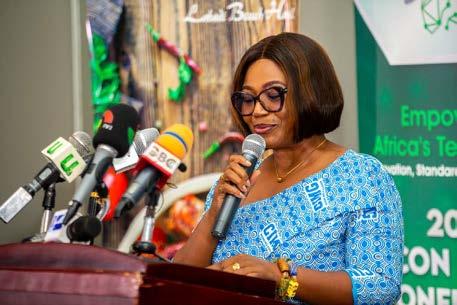
“As Africa’s markets continue to evolve, marketers must navigate rapid digital transformation, shifting consumer behaviours, and economic fluctuations. Maintaining brand trust is essential for long-term customer loyalty and business resilience,” McIntee-Carlisle says.
Among those who will be on the podium in Accra is Yaw Nsarkoh, who is no stranger to attendees of previous AMC conferences. The former top Unilever executive has helped to redefine marketing leadership across Africa, and his 2023 conference presentation highlighted the necessity of authentic, locally-rooted campaigns, which drew wide acclaim from delegates.
Frederic Perodeau, founder of agency 5.5Retail and a widely experienced retail-industry expert who has 35 years of expertise gained with organisations such as Procter & Gamble France and the French Institute of Merchandising, will share his reflections on retail – including lessons learned in Francophone African countries such as Algeria, Senegal and Cameroon.
Robert Ebo Hinson, Professor and Head of the Department of Marketing &
Industry leaders on the podium
Entrepreneurship at the University of Ghana Business School, is also no stranger to previous AMC conference attendees, or to African marketers in general. A popular commentator and
entertaining speaker on a wide range of marketing-related topics, he brings with him 20-plus years of marketing, communications and service excellence teaching, training and consultancy experience.
Isaac Gwumah is a market research expert and Executive Director of the Bureau of Market & Social Research Ltd, which has offices in Ghana and Nigeria. He was lead researcher and author for a major national destination brand research project undertaken in partnership with the Chartered Institute of Marketing, Ghana. At the 2025 conference he will discuss harnessing data analytics for predictive marketing.
Pluto Panoussis is currently Chief Strategy Officer at Open Window University in Lusaka and has been an architect, a designer, an illustrator, a writer and a filmmaker. He has directed a number of award-winning productions for film, television and the stage. He will examine innovation and creativity, particularly as it relates to the advertising and marketing spheres.
The AMC’s conferences are not just about the presentations, of course.
Speaking at the launch event in Accra, David Balikuddembe, Secretary
All smiles …

General of the African Marketing Confederation, emphasised that the AMC worked hard to ensure delegates to its conferences always returned home having experienced the sights and sounds of the host country. He acknowledged the contribution of the Labadi Beach Hotel – the venue for the joint conferences – and of the Ghana Tourism Authority for its enthusiasm and valuable input.
“We are excited to partner with the Ghana Tourism Authority to put together events that people will talk about for a while – about the host country, the people, the food, the culture, the dance, the dress,” Balikuddembe said.
The AMC Marketing Awards 2025 form part of the conference, with winners announced at the final night’s Gala Dinner.
Information updates, speaker confirmations, conference registration details, and accommodation options are available on both the AMC and TICON Africa websites. Readers of our Digital Edition can access the information here and here

› Our conference venue, the Labadi Beach Hotel, is Ghana’s premier 5-star hotel and is set amidst tropical landscaped gardens. Close to the international airport and CBD, it is located adjacent to Ghana’s most popular pleasure beach and boasts a well-maintained and secure private beach.
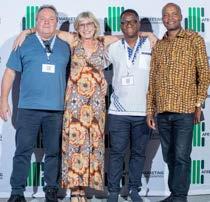

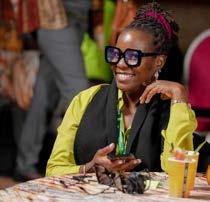
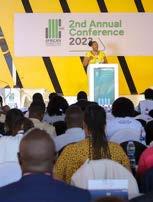
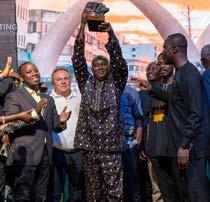
As we head into the 2025 conference in Accra, let’s take a moment to enjoy a trip down memory lane and relive some of the moments from our previous AMC conferences in 2022 (Victoria Falls, Zimbabwe), 2023 (Entebbe, Uganda) and 2024 (Mombasa, Kenya). Here’s to making more memories in 2025!
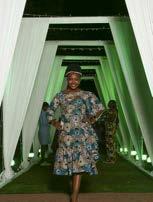
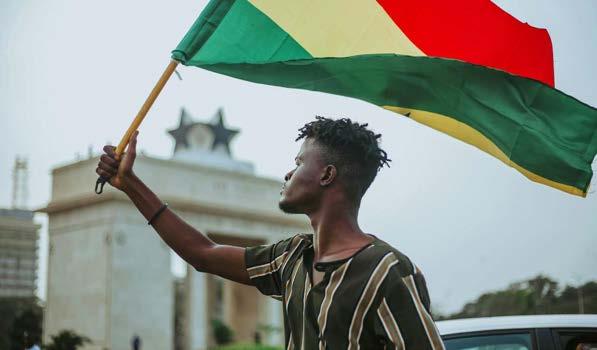
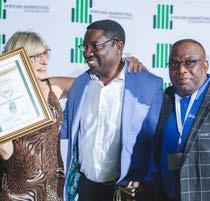
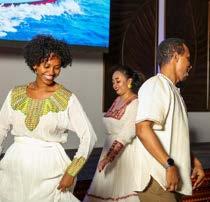
Here’s
FIRSTLY, GHANA IS A destination known for its cultural richness, natural beauty, economic growth, and forwardthinking business landscape.
Located in the heart of West Africa, Accra provides access to a growing market, making it the ideal hub to connect with key players and foster cross-border collaboration. As a nation, Ghana is a significant trading partner within the Economic Community of West African States (ECOWAS), consistently positioning it as a leading market for Ghana’s exports in the region.
RICH CULTURAL HERITAGE
Ghana offers a unique cultural experience with stunning coastlines, historic landmarks, and vibrant traditions. It’s a great opportunity to explore while deepening your understanding of local consumer behaviour.
Ghana’s stable government and growing economy make it a top destination for international business, offering marketing professionals opportunities to connect, collaborate, and explore new ventures. Ghana is the largest gold producer in Africa, generating US$7.6-
Our delegates are heading to vibrant Ghana and its capital, Accra. Here are a few reasons why it’s a great venue for the conference.
billion in export income in 2023, The World Bank projects Ghana’s GDP to grow by 4.3% in 2025. Additionally, Foreign Direct Investment (FDI) inflows are expected to rise, reaching 3% of GDP by 2028.
Ghana is embracing digital transformation, offering attendees insights into cutting-edge marketing strategies, digital tools, and emerging trends shaping the industry in Africa and globally. Digital adoption in Ghana has continued to grow steadily, with internet access reaching 70% and mobile connectivity at 113% in early 2024. This widespread digital reach has driven the rise of e-commerce, digital banking, and social media marketing, transforming how Ghanaians discover, assess and purchase products and services.
Accra is well-connected with direct international flights and modern infrastructure, ensuring a seamless travel experience for professionals from around the world to attend the conference. Kotoka International Airport in Accra oversaw over 3.09-million passengers in 2023, with traffic increasing to 3.4-million in 2024, underscoring its strong capacity and growing role as a regional aviation hub.
Increasingly, African consumers are seeking health and wellbeing in their daily lives. How should marketers meet this need? Fiona Zerbst finds out.

GLOBALLY, THE wellness economy is valued at over US$5.6-trillion, encompassing everything from personal care to workplace wellness and wellness tourism. While Africa’s share of this economy is relatively small, its growth potential is significant.
Indeed, the Global Wellness Institute, a non-profit that educates the public and private sectors about preventative health and wellness, has identified Africa as the next frontier in global wellness.
As disposable income rises on the continent, more consumers spend money on health, nutrition, fitness and self-care – all facets of the wellbeing economy. A survey by the IMARC Group, an international market research company, indicates that the West African health and wellness market is expected to grow at above 4% from 2024 to 2032, fuelled by increasing health consciousness and a shift towards preventive care.
Currently, South Africa has a wellestablished health and wellness market, with Kenya not far behind, based on its preference for low-processed food and beverages. This makes it easier for health and wellbeing brands to find traction in the market, says Christopher Day, senior analyst at data analytics company Euromonitor International.
Encouragingly, Africans are ahead of the global curve when it comes to health awareness. A recent Ipsos Global Trend study shows that 90% of Africans surveyed believe eating well is critical to maintaining good health (as against the global average of 84%), and 92% feel they need to do more to look after themselves physically (compared to only 84% globally).
At the same time, economic realities have undermined their good intentions, cautions Ato Micah, CEO of Maverick Research, a market research company based in Ghana.
“Before the Covid-19 pandemic, there was greater awareness of the
need to test for lifestyle diseases and watch what you eat,” he says.
“However, severe economic recession, high inflation and the erosion of purchase power have led people to buy affordable, convenient food that provides sustenance. Unfortunately, it’s often high in calories, sugar and salt.”
Many governments across Africa are taking steps to combat the rise of non-communicable diseases.
For example, Nigeria is believed to be the first African country to set mandatory sodium benchmarks for processed and pre-packaged food, while South Africa introduced a Health Promotion Levy on sugar-sweetened beverages in 2018. In June 2025, Kenya announced that it plans to clamp down on the marketing of unhealthy foods, particularly sugary and fatty foods targeting children.
There is a gap in the market to introduce healthier products at a price consumers can afford – but there are other gaps, too. Brands have a chance to redefine wellness marketing and develop empowering solutions. So, which trends can they tap into?
The pandemic shifted the way we think about health and wellness, notes Dr Ngozi Egbuche, a GP and CEO of Wellness Advocates Nigeria, an organisation that works to bridge the gap between health knowledge and practical action.
“There’s a growing awareness of mental, emotional and spiritual wellness – not just physical health – and a renewed interest in traditional and alternative medicine,” she says. “In addition, telemedicine, fitness apps and online therapy platforms have surged, allowing broader access across regions.”
This has all led to the emergence of trends of which marketers should take note.
A renewed interest in indigenous knowledge systems is influencing what we eat, observes Nancy Muguiyi Njogu, a brand strategist at South African-based Kalazuri Art & Wellness, which combines art with mindfulness practices.
“Gut health has become a primary area of focus, with more people opting to introduce – or reintroduce – naturally fermented foods, which are rich in prebiotics and probiotics, into their diets,” she says.
African populations have unique gut bacteria and have been losing microbiome diversity by eating too little fibre and taking too many antibiotics. The result? Autoimmune disorders, allergies, and even diabetes. Many brands are now responding by serving up healthy food and beverages in a relatable way. For example, Rita Doherty, Strategy Director at ad agency VML in South Africa, says brands like Number 1 Mageu and DanUp enjoy enduring popularity and cultural relevance.
“Number 1 Mageu was previously seen as old-fashioned, a beverage for labourers, but it’s been rediscovered as a heritage food,” she explains. “Similarly, DanUp – a multigrain and yoghurt mageu – is marketed as a low-GI source of energy, but also a symbol of positive, caring, aspirational masculinity.”
The products come in a variety of flavours – including cream, berry, sorghum and moringa – and their bright, fresh packaging has general appeal. Hip young brands like Pure Folk Fermented Foods have introduced previously niche-market products such as sauerkraut, kimchi, kombucha, water kefir, ginger-infused beet kvass, and fire tonics to South African supermarket chain Food Lover’s Market. It was named as the chain’s top social enterprise supplier in 2024. Ancient grains are also making a comeback. Fonio, a crop rich in amino acids, iron and fibre, has been termed ‘the ancient grain of the future’ by the
Global Wellness Institute. Yolélé
West Africa sells a variety of brightly packaged, climate-smart fonio crisps in various flavours – including chili, onion and lime, and dawadawa and herbs. It also sells fonio pilafs such as Dakar Curry (turmeric, scallion and currants) and Afro Funk (dawadawa, mushroom and garlic).
Plant-based innovation is another wellness trend that’s growing on the continent. For example, VeggieVictory, Nigeria’s first vegan food company, teamed up with leading health food restaurant chain Nuli to launch a 100% plant-based meat product.
The company has since expanded its line of plant-based foods to include vegan beef jerky and other products tailored to the Nigerian market, including shawarmas and meatless burger patties.
Camel milk, rich in vitamins and essential minerals like zinc, potassium and iron – and lower in fat, cholesterol and lactose than cow’s milk – is also having a moment. Camelicious in Somalia and Nourishing Nomads in Kenya are leading brands that enjoy local as well as international success with their products. These include fresh and flavoured milk, milk powder, laban, ice cream, and coffee drinks.
Another growing trend is zero-alcohol drinks for the sober-curious. Mahala is an alcohol-free, triple-distilled spirit that’s free of alcohol, sugar, colourants and artificial flavours, and plays on the idea of ‘mahala’, the isiZulu word in South Africa for ‘free’.
Euphorika is marketed as an “Africaninspired” non-alcoholic beverage that contains sceletium tortuosum (kanna) extract, a natural mood booster. There’s a trend to combine this extract with other adaptogenic herbs or nootropic ingredients to create ‘social tonics’.
Supplements are branded as treats ›
Euromonitor’s Christopher Day says many health and wellness products benefited from the pandemic as it drove consumers to shift to healthier living and use products providing immuneboosting properties.
However, supplements have never been hugely palatable, which is why we’ve seen consumer-friendly ‘gummies’ on pharmacy and supermarket shelves.
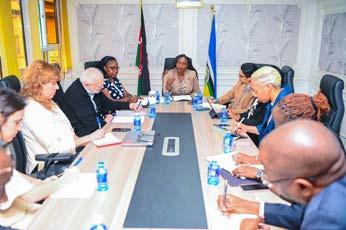
It’s becoming easier for African consumers to supplement through tasty treats. For example, Baobest’s Superfruit Bites are snacks made from one of Africa’s ‘superfruits’ and packaged in three flavours: baobab and raspberry, baobab and mango, and baobab and mixed berry. Best of all, the bites include vitamin C, antioxidants and fibre.
The ‘Top Trends for 2024’ report produced by UK-based research company FMCG Gurus noted a preference for food and drink formats over supplements, and this trend continues to grow.
Njogu, from Kalazuri Art & Wellness, notes that protein and collagen supplements are sold on TikTok, but there’s a move back to ‘natural’ alternatives like bone broth, which is packed with protein, collagen, vitamins and minerals.
“Magnesium has become a wellness buzzword on TikTok, but the standard African diet already includes potatoes, fruit, vegetables, beans, lentils, avocado and fish – all excellent sources of magnesium and other nutrients,” she explains.
Food is tastier than pills, which is why marketers are blurring the lines between food and supplementation.
“Taste, taste and taste are the first, second, and third most important elements when it comes to what we consume. It doesn’t matter how healthy a product is – if it doesn’t taste good, consumers won’t buy it,” Maverick’s Ato Micah points out.
Taboos around mental health are weakening, and Africans – who are highly social – are increasingly leaning on one another to improve their mental wellbeing. The ‘loneliness epidemic’ in the Western world is not encroaching on the continent due to strong communal, faith-based and extended family networks.
“Our ability to build community

› Ninety percent of Africans surveyed believe eating well is critical to maintaining good health (versus a global average of 84%)
inoculates us – it’s our super-strength,” says VML’s Doherty, adding that research shows that even older men in rural areas take an active interest in conversations about mental health. However, there are relatively few trained mental health professionals in Africa, and practitioners are not always open to discussions about depression, stress and reproductive health, says Dr Egbuche. Fortunately, there are communal models that break down barriers.
The Bluemind Foundation, in partnership with Heal by Hair, trains hairdressers in Togo, Cameroon and Côte d’Ivoire to provide psychological support to their customers, and the She Writes Woman platform, the brainchild
of founder Hauwa Ojeifo, offers localised mental health services and training in Nigeria. Ojeifo says she started the platform as she was determined to “speak truth to stigma” after being diagnosed with bipolar disorder and PTSD.
“While we are seeing encouraging shifts, especially among younger generations, there’s still more work to be done,” notes Dr Egbuche. “Greater access to information, improved infrastructure, and stronger support systems could help accelerate progress.”
Local wellness initiatives – fitness clubs, community gardens, dance classes – are gaining momentum.
“Even in the 80s, keep-fit clubs brought neighbourhoods together to exercise,” says Micah.
“However, we are finding ways to scale these initiatives and repurpose them for modern consumption. In fact, we’re increasingly viewing movement as a healing practice, not just chasing fitness for its own sake.”
Doris Ozulu, a public health and wellness advocate in Nigeria, observes that ‘Afrobics’ and ‘Afrofit’ classes blend exercise with traditional African dance to create the irresistible rhythms of Afrobeats. “These intense cardio fusion workouts assist with weight loss and body positivity,” she points out. Another growing trend on the continent is the recognition that yoga
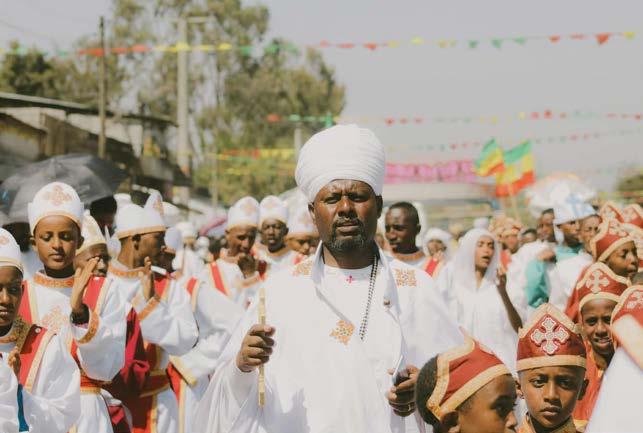
and meditation are not esoteric practices but practical tools for maintaining fitness and emotional stability. Virgin Active, a popular fitness club chain in South Africa, has a social wellness club offering that includes hot yoga and sound bath sessions. “We’re no longer focusing just on physical health, but what health means to us personally,” notes Robyn Williams, a service line manager at Ipsos in South Africa. “We’ve realised our minds need as much TLC as our bodies.”
Like their global peers, Africans are putting self-care first, and embracing the emerging analogue movement – a return to non-digital hobbies. This includes recreational sport, cycling, walking, and traditional dance.
As exciting as the wellness landscape is on the continent, marketers may need to overcome a few consumer pain points to succeed.
consumers indicate they’re concerned about the environment, but this doesn’t always mean they’ll buy eco-friendly products. Dr Egbuche recommends promoting locally sourced products like biodegradable yoga mats or herbal heat packs.
4. Locate underserviced groups of consumers. Women’s health is a good example here, says Doherty, adding that there are very few products catering for ovarian health or symptoms of perimenopause and menopause. One possible indigenous solution is moringa-based teas and fortified foods for women’s health and immune support.
5. Tap into workplace wellness initiatives. In the workplace, employees are more vocal about stress and burnout, and many companies mandate staff members to participate in certain wellness offerings, says South African
employee wellness coach Pearl Tshabalala. The corporate wellness market is growing rapidly – BlueWeave Consulting notes it’s worth around US$3.1-billion in Africa and the Middle East (continent-wide figures are hard to come by), and around US$464million in South Africa alone. Dr Egbuche says this provides wellness brands with an opportunity to partner with companies to create employee wellness packages including wellness and fitness products, stress management workshops, and mental health support.
Although consumers are embracing health and wellness trends with enthusiasm, this does not always mean they buy products that are good for them, says Doherty, who points out that it’s an “incremental journey” involving replacing some bad habits with better ones.
“Young people are driving double-digit growth in energy drinks, but they’re also embracing smoothies,” she notes.
Affordability will be a key concern. “Brands that prioritise affordable price points, relative to other health and wellness competitors, will likely improve their market share,” Day predicts, citing the example of Checkers’ Simple Truth line of products, which outperforms premium alternatives in South Africa by offering affordable products with health and wellness benefits. “These include lactose-free milk and gluten-free pasta at significantly lower prices,” he points out. Ozulu concludes that, to succeed in this space, brands should “localise, personalise, and build with community at heart”. In this way, they can offer real value to customers who are becoming ever more discerning.
Fiona Zerbst has been a journalist and editor for over 20 years. She writes primarily about business and finance and has worked for publications and clients in South Africa, Botswana, Zambia, Nigeria, Canada, Finland and the UK.
Dr Egbuche says wellness products and services such as supplements, fitness gear and gym memberships are often seen as luxuries – but brands can win by focusing on locally made, high-quality wellness products or subscription models that provide lower-cost access to services like gyms and healthy food delivery.
their intuition.” A winning example is Sankofa Natural Spices, which offers a salt- and preservative-free alternative to seasoning cubes. The innovation is bringing traditional herbs into the mainstream and removing some of the tediousness of food prep,” Micah notes.
1. Find gaps in the market to meet real needs. Marketers must be data-led when identifying gaps in the market, especially when it comes to specific needs, says Micah. “I’ve seen marketers make horrendous decisions because they were led by
2. Hit the right price point. Willams says there’s a clear gap in the market for affordable health products for women, for example. “A pregnant woman may take prenatal vitamins for a few months, then stop because they’re too expensive,” she notes, adding that this puts a stop to healthy habits.
3. Keep it real for environmentally conscious consumers. Many
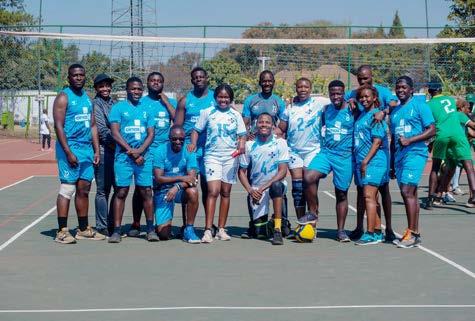


Benefit from Over 60 Years of Education Excellence
Access the Latest, Industry-Relevant Curricula
Receive Academic and Professional Support
Graduate as a Highly Sought-After Job Candidate

Access International Markets through Global Expertise and Career-Ready Skills with Industry-Recognised Accreditation from:



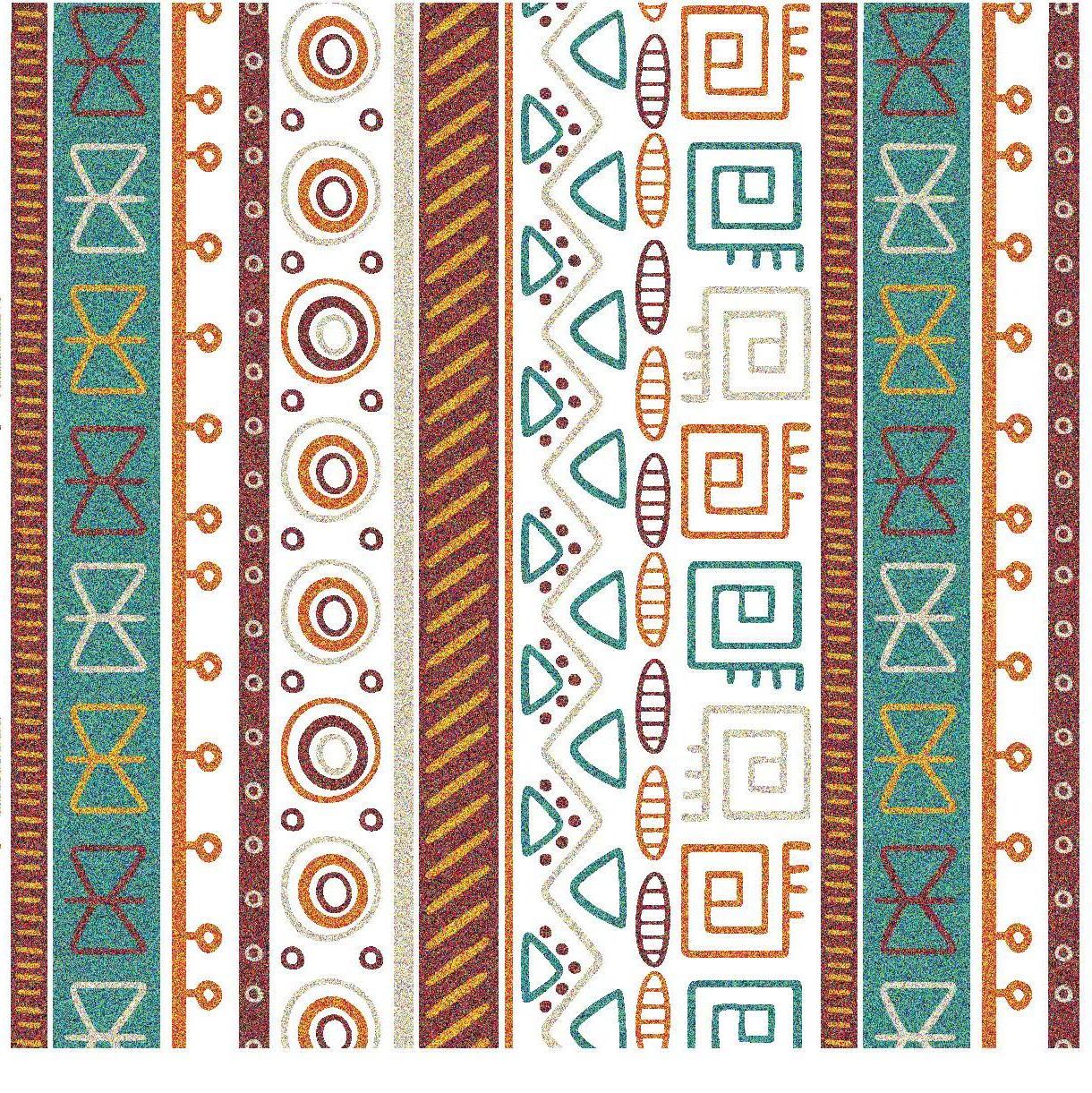


Africa’s marketing landscape presents unique challenges as well as immense opportunities for innovative marketers. By
rapid economic transformation and digital evolution, marketers face a distinct set of challenges and opportunities that differ from other regions. While some hurdles, such as budget constraints and digital adoption gaps, are common across developing markets, Africa’s unique cultural, economic, and regulatory environment presents distinct marketing dynamics.
CHALLENGES UNIQUE TO THE AFRICAN MARKET
I have identified four areas that believe pose significant challenges for marketing teams and marketing executives operating on the continent.
• Fragmented consumer data and informal markets: Unlike developed markets where structured consumer data is readily available, Africa’s retail landscape remains largely informal, accounting for nearly 70% of consumer transactions (World Bank, 2023). Many businesses rely on unstructured data sources, word-ofmouth marketing, and limited point-ofsale analytics, making it difficult to track consumer behaviour accurately. The lack of centralised consumer insights challenges marketers when developing targeted campaigns and personalised engagement strategies.
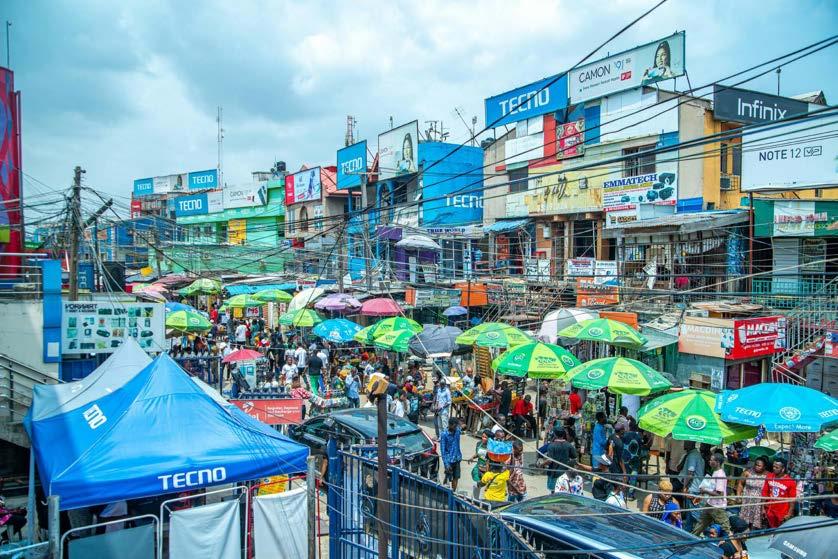
Charity Winnie Kamusiime-Asiimwe
of digital marketing, forcing marketers to blend online and offline tactics, including SMS marketing, radio and community-based activations, to reach last-mile consumers.
• Regulatory complexity across multiple markets: African markets have highly fragmented regulatory landscapes, making regional marketing campaigns complex. Countries such as Nigeria, South Africa and Kenya have stringent advertising laws, while cross-border e-commerce faces varying tax regimes. For example, Nigeria’s ARCON (Advertising Regulatory Council of Nigeria) mandates influencer registration and approval of digital ads, while South Africa’s Protection of Personal Information Act (POPIA) regulates how brands collect consumer data. Navigating these diverse policies demands localised legal expertise and compliance strategies.
OPPORTUNITIES UNIQUE TO THE AFRICAN MARKET
In my estimation, these are the panAfrican opportunities that CMOs and their teams should be looking to take advantage of.
• Linguistic and cultural diversity: Africa is home to over 2,000 languages and
thousands of cultural identities, requiring brands to tailor messaging to hyper-localised audiences. Unlike Western markets where English or a single dominant language suffices, African marketers must navigate multilingual campaigns while ensuring cultural sensitivity. A one-size-fits-all approach fails in markets like South Africa, where 11 official languages exist, or Nigeria, where regional dialects shape consumer engagement differently across states.
• Infrastructure gaps and digital divide: While mobile penetration in Africa is high, internet access remains uneven, particularly in rural areas. As of 2023, only 43.2% of Africans had internet access, compared to a global average of 67% (Statista, 2024). Poor connectivity limits the effectiveness

• Growth of regional trade and crossborder marketing: The African Continental Free Trade Area (AfCFTA), connecting 1.3-billion people across 55 countries, is creating unprecedented opportunities for businesses to expand beyond their home markets. This shift allows brands to develop pan-African marketing strategies, leveraging cross-border e-commerce and digital exports. African brands that position themselves for regional scalability will gain early-mover advantages in new trade hubs across West, East and Southern Africa.
• Dominance of mobile-first marketing strategies: Unlike developed economies that transitioned from
desktop to mobile, Africa is a mobilefirst continent, with over 570-million mobile internet users (We Are Social, 2024). This presents a unique opportunity for businesses to leverage mobile platforms, WhatsApp Business, TikTok, and SMS-based marketing to engage consumers directly. Africa’s mobile ecosystem enables costeffective, high-reach digital campaigns, making it easier for brands to interact with diverse audience segments.
• Demand for locally authentic and purpose-driven brands: African consumers are increasingly drawn to brands that reflect local identity, sustainability and community impact.
According to Edelman’s 2023 Trust Barometer, over 76% of African consumers prefer brands that align with their values. Companies that incorporate African heritage, sustainability and social impact messaging into their marketing strategies build stronger customer trust and loyalty. Brands like Dangote Group, MTN and Safaricom have successfully leveraged this trend by integrating local narratives into their branding.
• The rise of influencer and communitydriven marketing: Influencer marketing is expanding rapidly in Africa, with
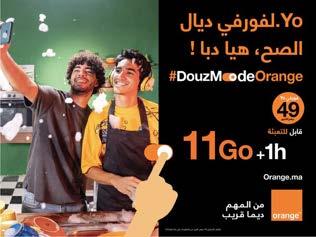
social media engagement rates surpassing those in Western markets.
A 2023 study by the Africa Influencer Marketing Agency (AIM) found that African influencer campaigns deliver 11x higher engagement than traditional advertising. Unlike global markets where mega-influencers dominate, Africa is witnessing a rise in micro-influencers and communitydriven storytelling, offering brands authentic, high-trust engagement at lower costs.
• AI, automation, and digital leapfrogging: While traditional digital infrastructure in Africa lags behind, the continent is leapfrogging into AI-driven marketing. Businesses are increasingly

›
Start your journey to becoming a top-notch marketing professional in Uganda and in the region.
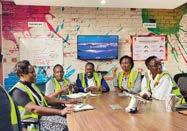
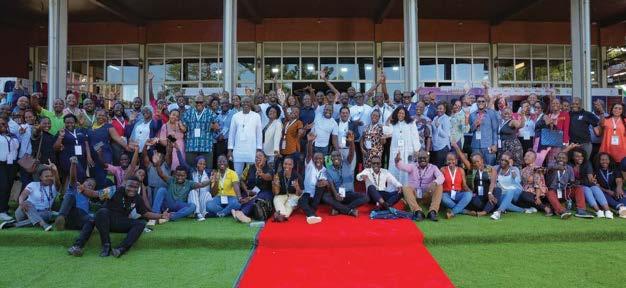

using chatbots, predictive analytics and voice AI to enhance consumer experiences. A 2023 McKinsey report found that African companies using AI-powered personalisation see a 35% increase in customer engagement. Brands embracing automation can scale personalised marketing strategies faster than competitors relying on traditional approaches.
Africa’s marketing landscape presents unique challenges, from fragmented consumer data to regulatory diversity and financial inclusion barriers.
However, the continent’s mobile-first economy, regional trade expansion and demand for purpose-driven branding create immense opportunities for innovative marketers.
Brands that embrace localisation, invest in digital strategies, and adapt to shifting consumer behaviours will be well-positioned for sustained growth and market leadership across Africa.
Charity Winnie Kamusiime-Asiimwe is Head of Marketing at dfcu Bank in Uganda. She has also been President of the Uganda Marketers Society since March 2022. She holds a Diploma and Post-Graduate Diploma in Professional Marketing from the CIM, an MBA from the University of Gloucestershire, and an Extended Diploma in International Business & Strategy from the Scottish Qualifications Authority.

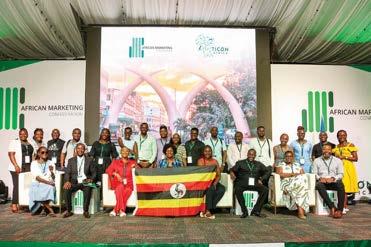
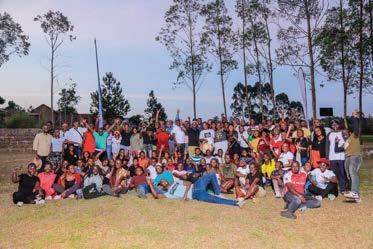

Le paysage marketing de l’Afrique présente des défis uniques ainsi que d’immenses opportunités pour les spécialistes du marketing innovants. Par l’association caritative Winnie Kamusiime-Asiimwe.
connaît une transformation économique rapide et une évolution numérique, les spécialistes du marketing sont confrontés à un ensemble distinct de défis et d’opportunités qui diffèrent des autres régions.
Bien que certains obstacles, tels que les contraintes budgétaires et les lacunes en matière d’adoption numérique, soient communs aux marchés en développement, l’environnement culturel, économique et réglementaire unique de l’Afrique présente une dynamique marketing distincte.
J’ai identifié quatre domaines qui, selon moi, posent des défis importants aux équipes marketing et aux responsables marketing opérant sur le continent.

• Données de consommation fragmentées et marchés informels
› Le paysage de vente au détail largement informel de l’Afrique signifie qu’il y a un manque de données structurées sur les consommateurs
Contrairement aux marchés développés où les données structurées sur les consommateurs sont facilement disponibles, le paysage de la vente au détail en Afrique reste largement informel, représentant près de 70 % des transactions des consommateurs (Banque mondiale, 2023). De nombreuses entreprises s’appuient sur des sources de données non structurées, sur le marketing de bouche à oreille et sur des analyses de point de vente limitées, ce qui rend difficile le suivi précis du comportement des consommateurs. Le manque d’informations centralisées sur les consommateurs constitue un défi pour les spécialistes du marketing lorsqu’ils développent des campagnes ciblées et des stratégies d’engagement personnalisées.
• Diversité linguistique et culturelle : L’Afrique abrite plus de 2 000 langues et des milliers d’identités culturelles, ce qui oblige les marques à adapter leurs messages à des publics hyperlocalisés. Contrairement aux marchés occidentaux où l’anglais ou une seule langue dominante suffit, les spécialistes du marketing africains doivent gérer des campagnes multilingues tout

› Les spécialistes du marketing africains doivent gérer des campagnes multilingues tout en garantissant une sensibilité culturelle
en garantissant une sensibilité culturelle. Une approche unique ne fonctionne pas sur des marchés comme l’Afrique du Sud, où il existe 11 langues officielles, ou le Nigéria, où les dialectes régionaux façonnent l’engagement des consommateurs différemment selon les États.
• Lacunes en matière d’infrastructures et fracture numérique : Bien que la pénétration de la téléphonie mobile en Afrique soit élevée, l’accès à Internet reste inégal, en particulier dans les zones rurales. En 2023, seulement 43,2 % des africains avaient accès à Internet, contre une moyenne mondiale de 67 % (Statista, 2024). Une mauvaise connectivité limite l’efficacité du marketing numérique, obligeant les spécialistes du marketing à combiner des tactiques en ligne et hors ligne, notamment le marketing par SMS, la radio et les activations communautaires, pour atteindre les consommateurs du dernier kilomètre.
• Complexité réglementaire sur plusieurs marchés : Les marchés africains ont des paysages réglementaires très fragmentés, ce qui rend les campagnes de marketing régionales complexes. Des pays comme le Nigéria, l’Afrique du Sud et le Kenya ont des lois publicitaires strictes, tandis que le commerce électronique transfrontalier est confronté à des régimes fiscaux différents. Par exemple, l’ARCON (Advertising Regulatory Council of Nigeria) du Nigéria impose l’enregistrement des influenceurs et l’approbation des publicités numériques, tandis que la loi sud-africaine sur la protection des informations personnelles (POPIA) réglemente la manière dont les marques collectent les données des consommateurs. Naviguer dans ces diverses politiques exige une expertise juridique localisée et des stratégies de conformité.
À mon avis, ce sont les opportunités panafricaines que les directeurs marketing et leurs équipes devraient chercher à exploiter.
• Croissance du commerce régional et du marketing transfrontalier La Zone de libre-échange continentale africaine (ZLECA), qui relie 1,3 milliard de personnes dans 55 pays, crée des opportunités sans précédent pour les entreprises de se développer au-delà de leurs marchés nationaux. Ce changement permet aux marques de développer des stratégies marketing panafricaines, en tirant parti du commerce électronique transfrontalier et des exportations numériques. Les marques africaines qui se positionnent pour une évolutivité régionale bénéficieront
d’avantages de précurseurs dans de nouveaux pôles commerciaux en Afrique de l’Ouest, de l’Est et du Sud.
• Dominance des stratégies marketing axées sur le mobile : Contrairement aux économies développées qui sont passées du bureau au mobile, l’Afrique est un continent qui privilégie le mobile, avec plus de 570 millions d’utilisateurs d’Internet mobile (We Are Social, 2024). Cela représente une opportunité unique pour les entreprises de tirer parti des plateformes mobiles, de WhatsApp Business, de TikTok et du marketing par SMS pour interagir directement avec les consommateurs.
L’écosystème mobile africain permet des campagnes numériques rentables et à grande portée, ce qui permet aux marques d’interagir plus facilement avec divers segments d’audience.
• Demande de marques locales authentiques et axées sur un objectif : Les consommateurs africains sont de plus en plus attirés par les marques qui reflètent l’identité locale, la durabilité et l’impact communautaire. Selon le baromètre de confiance 2023 d’Edelman, plus de 76 % des consommateurs africains préfèrent les marques qui correspondent à leurs valeurs. Les entreprises qui intègrent l’héritage africain, la durabilité et les messages d’impact social dans leurs stratégies marketing renforcent la confiance et la fidélité des clients. Des marques comme Dangote Group, MTN et Safaricom ont réussi à tirer parti de cette tendance en intégrant des récits locaux dans leur image de marque.
• L’essor du marketing d’influence et du marketing communautaire : Le marketing d’influence se développe
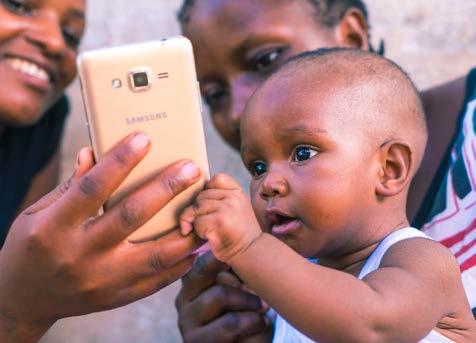
rapidement en Afrique, avec des taux d’engagement sur les réseaux sociaux dépassant ceux des marchés occidentaux. Une étude réalisée en 2023 par l’Africa Influencer Marketing Agency (AIM) a révélé que les campagnes d’influence africaines génèrent un engagement 11 fois plus élevé que la publicité traditionnelle. Contrairement aux marchés mondiaux où dominent les méga-influenceurs, l’Afrique connaît une montée en puissance des micro-influenceurs et des récits communautaires, offrant aux marques un engagement authentique et de grande confiance à moindre coût.
• IA, automatisation et bond en avant dans le domaine du numérique : Alors que l’infrastructure numérique traditionnelle en Afrique est à la traîne, le continent se lance dans le marketing basé sur l’IA. Les entreprises utilisent de plus en plus les chatbots, l’analyse prédictive et l’IA vocale pour améliorer l’expérience des consommateurs. Un rapport McKinsey de 2023 a révélé que les entreprises africaines utilisant la personnalisation basée sur l’IA constatent une augmentation de 35 % de l’engagement client. Les marques qui adoptent l’automatisation peuvent mettre en œuvre des stratégies marketing personnalisées plus rapidement que leurs concurrents qui s’appuient sur des approches traditionnelles.
Le paysage marketing de l’Afrique présente des défis uniques, allant de la fragmentation des données sur les consommateurs à la diversité réglementaire et aux obstacles à l’inclusion financière. Cependant, l’économie du continent, axée sur le mobile, l’expansion du commerce régional et la demande de marques axées sur un objectif créent d’immenses opportunités pour les spécialistes du marketing innovants.
› Les consommateurs africains sont de plus en plus attirés par les marques qui reflètent l’identité locale

Les marques qui adoptent la localisation, investissent dans des stratégies numériques et s’adaptent aux changements de comportement des consommateurs seront bien placées pour une croissance soutenue et un leadership sur le marché en Afrique.
L’association caritative Winnie Kamusiime-Asiimwe est responsable du marketing à la banque dfcu
en Ouganda. Elle est également présidente de l’Uganda Marketers Society depuis mars 2022. Elle est titulaire d’un diplôme universitaire et d’un diplôme postuniversitaire en marketing professionnel du CIM, d’un MBA de l’Université de Gloucestershire et d’un diplôme étendu en commerce international et stratégie de la Scottish Qualifications Authority.
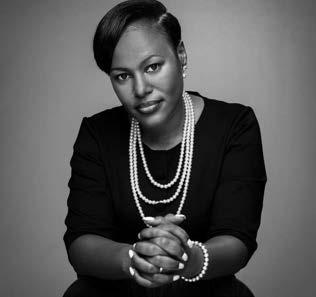

Businesses embracing the long game will find themselves not just participating in Africa’s growth story, but writing it. By Ato Micah.
as multinational consumer goods companies began an exodus from African markets. Headlines declared doom. Boardrooms pivoted. And as inflation surged and currencies wobbled, investors and strategists whispered the same question:
“Is Africa still worth the bet?” Back then, staying sounded naïve. Now, it looks like wisdom.
In the face of turbulent macroeconomic currents, some companies didn’t jump ship – they anchored deeper. They doubled down on local execution, cut fat, and most importantly, maintained their belief in the long-term value of the African consumer. And today, they are being vindicated –one quarterly report at a time.
Take Guinness Nigeria, which recently posted a N6.72-billion profit after tax (US$4,3-million) for the nine months ended March 2025. That’s a stunning reversal from the N61.65billion loss (US$39,5-million) during the same period just a year earlier.
Credit is due to CEO Girish Sharma
and his team for seeing potential where others saw volatility.
Unilever Nigeria isn’t far behind. They more than doubled their Q1 2025 profit after tax, versus Q1 2024. What’s driving that growth? A blend of disciplined capital strategy, tight cost controls, and a laser-sharp focus on the evolving needs of the African consumer.
We see similar green shoots in Ghana. Unilever Ghana, under the stewardship of MD Chris Wulff-Caesar, is showing renewed performance. Fan Milk Ghana, led by MD Lio Parent, is bouncing back with strength. But one of the most remarkable stories is that of Kasapreko PLC, a proudly Ghanaian beverage powerhouse.
While competitors exited and markets trembled, Kasapreko leaned in and plans to list 25% of the company on the Ghana Stock Exchange this year. Their 2024 results are stellar:
● Alcoholic beverage sales up 36% Non-alcoholic segment (water & soft drinks) up 29%

● Total revenue surged 45% YoY to 2.7-billion GHS (US$180-million at 2024 rates).
● Gross profit up 47%, EBIT up 80%.
● Interest cover at a rock-solid 178% (near 200% adjusted for FX losses)
● Profit after tax soared 574% YoY
● Total assets grew 40% to reach $1.6-billion.
If there’s a lesson in all of this, it’s not just about profit – it’s about perspective. Markets like Nigeria and Ghana are never for the faint-hearted. But those who invest with conviction and navigate with cultural intelligence can build legacies.
As they say in Nigeria, the best time to mount an elephant is when it is sitting.
Ato Micah is a brand marketing executive turned entrepreneur with 20+ years of experience with Procter & Gamble, Nielsen and Millward Brown in the US, Ghana and Nigeria. He is founder and CEO of Maverick Research, based in Accra, Ghana






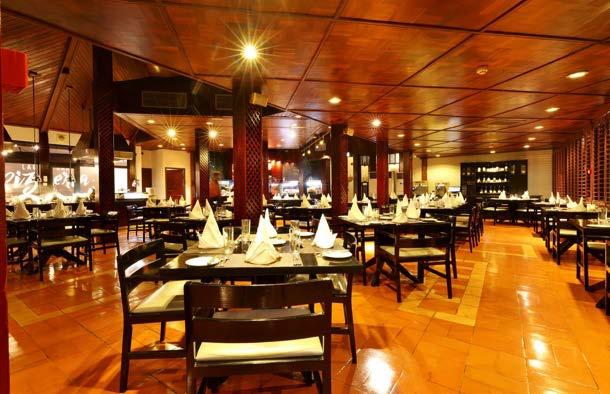
Speaking at the inauguration of the CIMG Governing Council, Minister says applying marketing principles can create a ‘fundamental shift’. By Clarence Pappoe.
GHANA’S MINISTER FOR Education and Member of Parliament for Tamale South, Honourable Haruna Iddrisu, has inaugurated the new Governing Council of the Chartered Institute of Marketing, Ghana (CIMG), calling for a fundamental shift in public sector service delivery through strategic marketing principles.
This inauguration ceremony, held at the Ministry of Education, marked a new chapter for the Institute as it deepens its regulatory role under the CIMG Act, 2020 (Act 1021).
The Minister, in his keynote address, challenged the inaugurated governing council to extend the influence of marketing beyond the private sector to the core of public governance, deepening public sector marketing for accountable governance and effective service delivery.
“Marketing is not just for selling products. At its heart, it is about understanding human needs and delivering value,” Hon. Iddrisu said.
“In the public sector, this means listening, responding and improving how we serve citizens. We need to embed marketing into the way government operates – so that we measure not just infrastructure outputs, but citizen satisfaction.”
To this end, the Minister proposed three bold initiatives: the introduction of a national satisfaction survey across Ministries, Departments, and Agencies (MDAs) to benchmark service delivery; the development of a customer-centric training programme for public servants in partnership with CIMG; and the institutionalisation of Citizen Accountability Forums as a core performance metric for public institutions.
Hon. Iddrisu also praised the immediate past president, Dr Daniel Kasser Tee, for his leadership in repositioning CIMG and achieving key milestones following the enactment of the CIMG Act, 2020 (Act 1021).
MINISTER’S PROPOSALS WELCOMED
CIMG National President and Council Chair, Mr Michael Abbiw, welcomed the Minister’s proposals, affirming the Institute’s readiness to collaborate with government agencies to build a service culture grounded in trust, responsiveness, and data-driven insights.
“Our Professional Marketing Qualifications and regulatory role place us in a strong position to support this agenda,” Mr Abbiw stated. “We already lead Ghana’s private sector customer satisfaction surveys. Extending this model to the public sector is not only
feasible – it is necessary.”
Mr Abbiw outlined the Council’s strategic vision anchored on an eightpoint agenda, including expanding the membership base, professional development, and strengthening research and advocacy through its flagship initiatives such as the Ghana Customer Satisfaction Index (GH-CSI) and Ghana Regional Brand Index (GH-RBI).
The Council pledged to deepen engagement with Ministries, Departments, and Agencies (MDAs), educational institutions, and key state actors to elevate marketing’s role in national development and improve the citizen experience across all public services.
This inauguration underscores CIMG’s evolving role as a national thought leader and its commitment to transforming marketing into a catalyst for effective governance and inclusive growth. The newly inaugurated Governing Council is made up of 11 distinguished members who will steer the Institute’s strategic vision over the coming years.
Clarence Pappoe is Deputy Manager, Corporate Communications for the Chartered Institute of Marketing, Ghana.
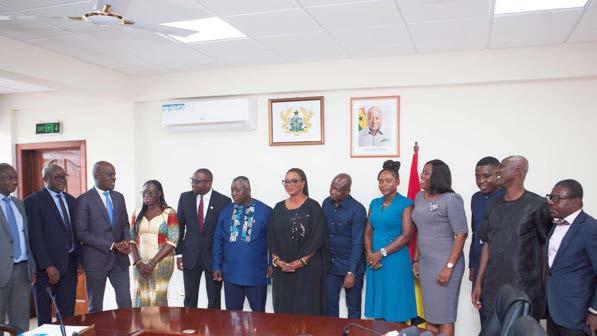
Kenya’s rapidly evolving consumer trends are not a moment of transition. Rather, they represent a complete reset, writes Yannick Lefang
KENYA’S CONSUMER landscape reflects a shift from crisis response to intentional adaptation. After years of economic pressure and structural change, consumers are spending more strategically, prioritising balance in wellness, embracing digital tools, and expecting real environmental accountability from brands. These shifts mark a deeper recalibration of values and trust. Kasi Insight’s recent ‘State of the Consumer Report’ for Kenya identifies four trends shaping this transformation: Strategic Resilience, Holistic Vitality, Emerging Reality, and Eco-Powered Living. For marketers, this is a call to respond with relevance, clarity and substance as people move forward on their own terms and expect brands to do the same.
Strategic Resilience captures how Kenyan consumers are responding to financial pressure with greater discipline and control.
Throughout 2024, consumer sentiment remained in negative territory for most months, reaching a low of -13 in June 2024, before improving slightly to -5 by December 2024. These numbers reflect a challenging economic environment, but they also reveal a population that is learning to adapt rather than withdraw.
By December, 40% of consumers said they were able to meet their regular expenses. This growing sense of financial stability has been supported by improved budgeting, more selective spending and a sharper focus on essentials. In the last quarter of 2024, 52% of respondents reported that they had concentrated their spending on core needs such as food, rent and school fees.
Gen X and high-income earners were especially active in adjusting their behaviour. They used tools to monitor prices, timed purchases around offers or payouts, and shifted to lower-cost alternatives when necessary.


and
Millennials and Gen Z also showed greater caution, with more than one in three saying they delayed purchases or used digital platforms to evaluate options before making a decision.
As inflation pressures eased toward the end of the year, some households began to reintroduce discretionary spending. Rather than cutting back completely, many are choosing to spend during specific periods of financial optimism, such as after receiving salaries or bonuses. This indicates that spending has not disappeared, but it has become more calculated.
Holistic Vitality captures the shift in how people define and pursue wellbeing. Health is no longer seen only through the lens of physical fitness or illness.
It now includes emotional stability, financial balance, social connection and personal care. In 2024, 91% of consumers described their health as good or excellent, up from 88% the year before. Among them, 30% reported an improvement in their physical health over the previous six months.
This shift is visible in both attitudes
and daily behaviour. Half of all consumers said they now eat at least two servings of fruits or vegetables every day. Demand for personal care and beauty products nearly doubled from mid-2023 to the end of 2024, reflecting a growing focus on selfconfidence and routine self-care.
(Editor’s note: See our cover story on the rising health trend across Africa). In tandem with this health focus, alcohol consumption remained low, continuing a downward trend that began in 2023 and suggests a more balanced approach to lifestyle choices. Wellness is being integrated into everyday life in ways that are practical and affordable. When asked about challenges, 46% of consumers cited cost as the biggest barrier to better health. Still, 39% said they had shifted toward home-based practices such as walking, preparing healthier meals, or creating simplified routines. This marks a move away from aspirational wellness trends and toward sustainable, realistic habits that can be maintained over time. Mental wellbeing is also gaining importance. More consumers are seeking tools that help reduce stress and
create a sense of balance. Rather than offering perfection or performance, brands now have an opportunity to support consistency, calm and emotional resilience.
Emerging Reality captures how consumers are seamlessly navigating between digital and physical experiences. In 2024, 69% still preferred to shop in person, but digital tools are playing an increasingly central role in how people discover products, make payments and stay informed.
Mobile money now powers 60% of national transactions in Kenya, with most consumers using at least four different access points – including mobile apps, SIM menus and USSD codes.
The path to purchase has become more fluid. Nearly half of consumers said they browsed online before buying in-store, while 35% reported doing the reverse.
Gen Z is leading this shift, with 43% regularly choosing digital platforms for their speed, variety and ease of access.
At the same time, older generations, especially Gen X, continue to value traditional retail for its trust, interaction and pricing clarity.
The divide is also visible in media consumption. While Gen Z and Millennials turn to digital channels such as social media and streaming services for product discovery, Gen X still relies more heavily on television, newspapers and other traditional formats. Across all age groups, the expectation has become consistent; what consumers see online should align with what they experience in-store. And every part of the journey, from browsing to payment and returns, should be seamless.
Eco-Powered Living reflects the growing alignment between personal values and environmental responsibility. In 2024,
97% of Kenyan consumers considered at least one sustainability factor when making a purchase.
Among these, 53% cited natural ingredients as the most important. Recyclable packaging followed at 48%, and plastic reduction at 41%. These choices are no longer limited to elite segments. They now shape decision-making across all age and income groups.
Younger generations such as Gen Z are particularly focused on ethical production, while Gen X tends to prioritise ingredient quality and packaging impact. There is also a strong preference for local sourcing, with 59% saying they would choose a locally made product when price and sustainability are aligned. This growing alignment between environmental and economic priorities signals that sustainability is no longer at odds with affordability. In many cases, the two are working together.

Despite this shift, trust remains a challenge. Nearly half of respondents said they remain sceptical of environmental claims unless supported by visible evidence, such as certifications or transparency about ingredients and sourcing.
Interest is also growing in communitybased sustainability efforts – such as companies that invest in tree planting, recycling programmes or local employment. There is little expectation of perfection. What matters is clarity, honesty and consistent effort. Sustainability is no longer an add-on or a campaign. It is part of the core value proposition.
• Understand timing is a competitive advantage. Spending decisions are increasingly tied to context. People are more likely to engage when timing aligns with salary cycles, school terms or harvest seasons. Planning product launches and promotions around these familiar rhythms can significantly improve resonance and uptake.
• Redefine wellness through accessibility and consistency. Wellbeing is no longer aspirational. It is practical, personal and rooted in routine. Offer solutions that are easy to maintain, reasonably priced and fit into everyday life. Brands that simplify health and self-care will earn deeper, longer-term loyalty.
• Ensure continuity across consumer touchpoints. The divide between digital and physical channels is disappearing. Shoppers move fluidly between them and expect pricing, service and information to stay consistent. Any disconnect reduces credibility. Success now depends on integration and clarity at every step of the journey.
• Make sustainability visible, measurable and locally grounded. Environmental values are shaping

› Sustainability is no longer at odds with affordability purchase decisions across all segments. What matters most is not the claim, but the action behind it. Clear labelling, community engagement and tangible progress help translate good intentions into brand trust and preference.
Kenyan consumers are taking on 2025 not just with caution, but with intention. The trends of Strategic Resilience, Holistic Vitality, Emerging Reality, and Eco-Powered Living reveal a market that is more discerning, more confident, and more aligned with purpose. Consumers are managing their finances with discipline, taking wellness into their own hands, engaging across platforms with clarity, and holding brands accountable for the world they help shape. This is not a moment of transition. It is a reset. For CMOs, the task ahead is not to out-shout competitors but to out-relevant them. The brands that succeed will be those that listen deeply, act consistently, and deliver meaning where it matters most.
pairs its proprietary highfrequency survey capability with advancements in statistics, data analytics and storytelling to inform better decisions on what Africans think and do – and why.

Soccer is the biggest driver. SA has replaced Kenya as the biggest SSA nation of betters in the latest GeoPoll survey.
emerged as a significant cultural and economic phenomenon across Africa, propelled by the continent’s youthful demographic, expanding internet and smartphone access, and the widespread enthusiasm for sports, particularly soccer.
This is according to the ‘Betting in Africa 2025’ report from research company GeoPoll. It builds upon the company’s previous reports –including the 2024 report, which also investigated the betting habits of youth in Ghana, Kenya, Nigeria, South Africa, Tanzania and Uganda.
“Over the past three years, betting participation across African countries has shown dynamic shifts,” GeoPoll says.
“In 2022, Kenya led the continent with 83.9% of respondents reporting they had tried gambling or betting, followed by Nigeria at 78% and South Africa at 74%.
“The 2024 study reaffirmed Kenya’s lead, with 82.8% of respondents indicating they had placed a bet, while South Africa (73.9%), Ghana (73%), Uganda (71.4%), Tanzania (71.1%), and Nigeria (65.3%) followed closely behind.”
But the 2025 results mark a notable shift in regional rankings. South Africa now tops the list with a striking 90% of respondents having placed bets, followed by Uganda at 87%.
Kenya, previously the consistent frontrunner, has dropped to third place with 79%. Nigeria follows at 71%,
while Ghana and Tanzania both report significantly lower betting participation at 56% each.
Among those who reported having ever placed a bet, GeoPoll explored how frequently they engage in gambling activities. In the 2024 survey, 32% of respondents indicated they bet approximately once a week. Additionally, 20.8% placed bets once a month, 17.8% bet at least once a day, and 15.6% reported betting more than once a day.
The 2025 findings show a slight increase in weekly betting, with 35% of respondents now gambling once a week. A total of 22% reported betting once a month, while 20% do so less than once a month.
Daily betting has seen a modest decline, with 14% betting once a day and 9% placing bets more than once a day.
Mobile phones have firmly established themselves as the preferred platform for betting across SSA. According to the 2025 survey, an overwhelming 91% of respondents who participate in gambling reported that they place their bets using a mobile phone.
“This highlights the critical role that mobile technology continues to play in shaping betting behaviours on the continent,” GeoPoll states.

With mobile devices offering easy access to betting services anytime and anywhere, they have effectively transformed gambling into an on-the-go activity – especially appealing to the continent’s predominantly young, techsavvy population.
Soccer remains the most popular form of betting in SSA, with 61% of respondents in the 2025 survey stating they mainly bet on football matches –continuing the trend observed in 2024. Aviator, a fast-paced digital game, has quickly risen in popularity, with 19% choosing it as their primary betting
option. Basketball follows distantly, preferred by 6% of respondents.
“These findings highlight football’s enduring appeal, while also pointing to a growing interest in alternative, highspeed betting formats like Aviator,” the researchers note.
● Ghana: Spending patterns show variety. Half of respondents reported spending less than $10 monthly, while 22% spend between $10 and $25 monthly. Smaller groups spend more: 5% between $25 and $50, 11% between $50 and $100, 11% between $100 and $500, and 5%

reported spending over $500. This indicates common small-stake betting alongside a smaller segment of highstakes bettors.
● Kenya: Most respondents (57%) reported spending less than $10 per month. Higher-spending brackets included: 28% between $10 and $25 a month, 3% between $25 and $50, 6% between $50 and $100, 3% between $100 and $500, and 3% spending over $500 monthly. This reflects predominant low-stake gambling but also a small group of high-stakes bettors.
● Nigeria: The majority of people repor ted spending less than $10 per month on gambling, indicating a strong preference for low-stakes participation. By contrast, the 2024 data revealed a more varied spending pattern: 58% spent under $10, 28% spent between $10 and $25, and 13% exceeded $25, suggesting only limited engagement in higher-spending categories.
● South Africa: In all, 45% repor ted spending less than $10 per month, while 33% spend between $10 and

$25. Higher-spending includes 11% between $25 and $50, and another 11% between $50 and $100. This shows most bettors are in low-tomid spending ranges, with a smaller segment betting higher stakes.
● Tanzania: Most people (93%) spent less than $50 per month. In stark contrast, a notable 7% spend over $500 monthly, highlighting a highspending minority.
● Uganda: Spending is distributed: 38% spend less than $10 per month,
46% spend between $10 and $25. Smaller groups spend more: 8% between $50 and $100, and 8% spend above $500. This points to common lower stakes alongside a small group of higher-stake gamblers.
The GeoPoll rapid survey was conducted in April 2025 among 4,191 youth. The sample was not fully demographically representative and naturally skewed towards younger people in urban areas.
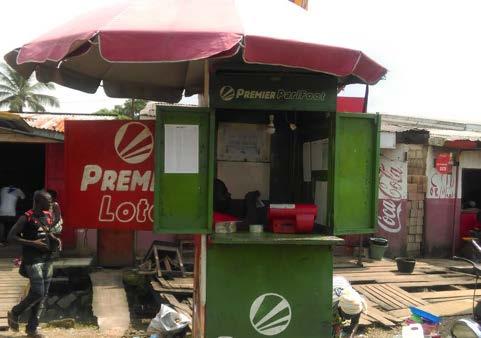

To develop Marketers into positions of influence.
Promoting professional development of Marketers in Malawi.
Setting best marketing practice standards.
Offering professional marketing training courses.
Networking opportunities for Marketers. Organising marketing events. Providing guidance to marketing students.
We have individual and corporate membership categories.
Membership runs from 1st April 2023 to 31st March 2024.


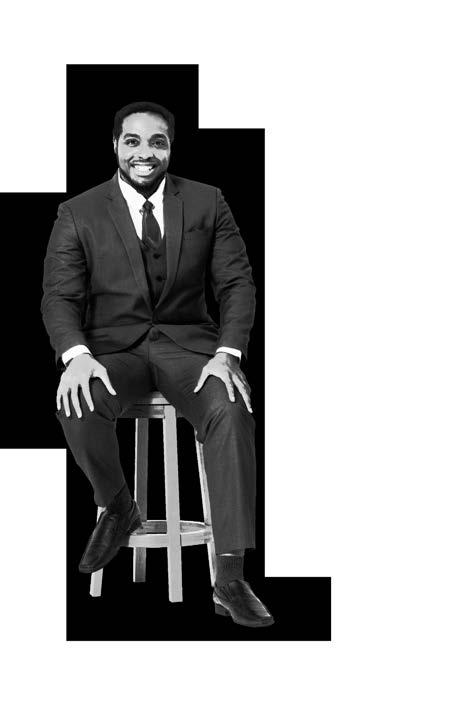
The right synergy between the two creates sustainable competitive advantage and must be on the agenda of all leaders and marketers, writes Dr Sean McCoy.
guru Peter Drucker is said to have stated that “Culture eats Strategy for Breakfast” in PowerPoint presentations around the world, it turns out not to be the case, and the source of the assertion remains anonymous.1 While this wisdom is so often repeated due to the pervasiveness of organisational culture, it was likely never intended as mutually exclusive –in fact, quite the opposite.
Strategy and culture have a critical interdependency and are natural and inseparable business bedfellows. The right synergy between the two can give rise to the potential for sustainable competitive advantage and should be on the agenda for leaders and marketers across most organisations and industries.
The pervasive and enduring nature of culture allows leaders to drive powerful change that permeates their businesses, enabling the achievement of bold strategic goals. Those that ignore it, however, do so at their peril and risk unattained strategies, disengaged employees, reputational damage, and
businesses that lag in the field of creativity, learning and innovation. Marketing as a discipline has a key role to play in supporting this, through the power of creativity and storytelling.
Culture is highly intangible and elusive, however, making this much easier said than done. Updated purpose statements, shiny new corporate logos, bold marketing campaigns and culture guidelines documents alone no longer cut it, and building highly people-centred organisations is now more critical than ever with the advent of AI and the emergence of integrated virtual, hybrid, and physical work environments.
Leadership goes hand-in-hand with strategy formation and implementation, and as a result most leaders understand its importance and fundamentals. Culture, however, remains more evasive and is often seen as ‘warm and fuzzy’ because much of it is anchored in unspoken behaviours, people’s mindsets, and social patterns within

› By adopting a proactive and inclusive approach to culture, organisations create a positive workplace experience

the business. This can often be confounding to leaders, resulting in culture remaining unmanaged or being delegated to the HR or People function in the business as a stand-alone role. Strategic shifts in the organisation often require culture change or renewed culture direction. Left unmanaged, the gap is obvious –suggesting that culture is way more impactful than strategy. This is clearly a missed opportunity2 for both the business and the contribution that marketers can make in this process. Organisational culture is an intricate system of shared values, beliefs, norms, and human behaviours that shape how members of an organisation interact with each other and with stakeholders outside the business. It is more than just a backdrop to a company’s operations; it serves as a powerful force that influences every aspect of business performance, including the realisation of corporate strategy.
At its core, organisational culture encompasses the underlying philosophy and mindset that guides a company, and it can manifest in various primary forms, such as:
• Values and Beliefs: These are the fundamental principles that guide human behaviour and decisionmaking. For example, a culture that

values innovation may empower employees to take risks, be prepared to fail, and explore innovative ideas. Critically, this needs to go beyond purpose statements and values posters on the office walls.
• Norms and Practices: The unwritten rules that dictate how work gets done. This could include communication styles, collaboration practices, or approaches to conflict resolution. This is often described as ‘how we show up’.
• Symbols and Artefacts: Organisational culture also includes visible elements such as logos and visual language, office layout, dress codes, and specific rituals that convey the organisation’s purpose, identity and values.
• Stories and Myths: Narratives about the organisation’s history and noteworthy events help reinforce cultural values and shape employee beliefs, often informed by the company’s origins and founding principles, which also evolve over time. This is a critical territory and opportunity for marketing.
• Organisational and Power Structures: Formal hierarchy, roles and reporting lines that illustrate power distribution in a business and reflect who holds influence and decision-making authority. This also includes power and influence at an informal level.
This apparent simplicity often belies the underlying complexity of culture management and strategic direction, giving rise to a number of myths
surrounding how this should be conducted in the organisation. Several of these are addressed below.
Organisational culture is often described as the invisible glue that holds a company together. However, despite its significance, many myths surround organisational culture, leading to misconceptions about how it is formed, maintained, and evolved.
In this section, I will explore just some of the most pervasive myths about organisational culture and clarify them to correct these misunderstandings, focusing on how they impact leadership, employee engagement, marketing efforts and overall business performance.
Myth 1: Organisational culture is static One of the most persistent myths is
that organisational culture is a static concept, fixed once it has been established. Many leaders mistakenly believe that culture can be cultivated during initial company formation and then left untended, assuming it will naturally persist.
In reality, organisational culture is dynamic and constantly evolving, influenced by changes in leadership, workforce demographics, external market forces, and shifts in technology – to name a few.
Leaders must actively engage with their culture, regularly assessing its strengths and weaknesses, and be prepared to adapt it, as necessary. Marketing must be engaged to help shift the narrative and capture evolving culture and strategies. Organisations that fail to recognise this evolution risk becoming stagnant, leading to disengagement among employees and compromised performance.
Correction: Organisational culture requires continuous nurturing and reassessment. It must be intertwined with the strategic objectives and values of the organisation, and leaders must be dedicated to fostering an environment that encourages open dialogue, storytelling, feedback and adaptability.
›
Myth 2: Strong culture means uniformity
Many people believe that a strong organisational culture equates to uniformity, where all employees think alike and adhere to similar behaviours. While a cohesive culture encourages alignment with core values, it does not require a homogenous workforce. In fact, diversity of thought, experience and background is essential for innovation and creativity. Organisations that cultivate an inclusive environment are more likely to thrive and adapt, as they benefit from a wealth of perspectives that drive problem-solving, creativity and decision-making.
Correction: A strong culture should celebrate diversity and encourage individuals to express themselves authentically. Emphasising inclusion allows organisations to draw from an array of insights and ideas, creating a vibrant culture that enhances performance and drives success.
Myth 3: Culture is only the responsibility of leadership It is a common fallacy to consider organisational culture as solely the responsibility of leadership. While leaders undoubtedly play a crucial role in shaping, communicating and
modelling the desired culture, every employee contributes to culture through their daily interactions and behaviours. A toxic environment could flourish even with positive leadership if employees perpetuate negativity and engage in counterproductive behaviours. Culture is a collective responsibility that involves everyone within the organisation, from the top down to the individual contributors. And, critically, it includes involving human resources, communication and marketing functions in the business.
Correction: To foster a strong culture, every employee must be empowered and encouraged to embody the organisational values. Leaders should promote a culture of ownership, where all team members feel responsible for contributing to a positive environment, regardless of their position within the structure.
Myth 4: Culture can be changed overnight
Many leaders fall prey to the belief that implementing a few strategic initiatives or launching a culturechange programme will result in an immediate transformation of the organisational culture.
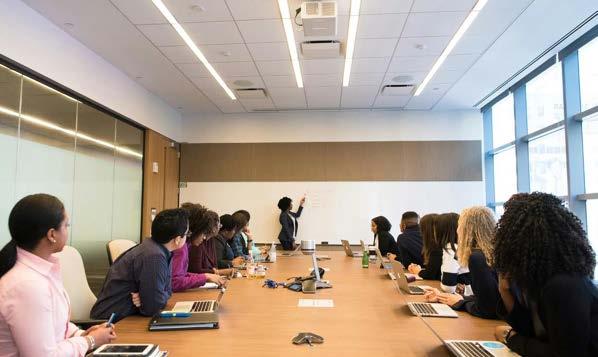

However, cultural change is inherently a slow and complex process that requires dedicated effort, sustained commitment, ongoing communication and strategic alignment. It often entails addressing deeply rooted beliefs and behaviours that have evolved over years or even decades, demanding a nuanced approach tailored to the organisation’s unique context.
Correction: Leaders must be patient and persistent in their efforts to influence culture. Strategic change initiatives should be realistic and achievable, creating short-term wins to build momentum while fostering long-term transformation. Ongoing training, engagement, communication and reinforcement of new behaviours are essential to creating lasting cultural shifts.
Myth 5: A good culture guarantees business success
While a healthy organisational culture is undoubtedly a critical success factor, equating good culture with guaranteed business success oversimplifies the complexity of business dynamics. Other variables, including market conditions, competition, business offerings, and
operational efficiency also significantly impact an organisation’s performance. Culture cannot singlehandedly compensate for deficiencies in strategy, execution or product/service quality. While a positive culture can enhance employee engagement and retention, contributing to higher productivity and morale, it should be seen as part of a broader ecosystem of factors driving business results.
Correction: Acknowledging that culture is one of several pivotal elements in driving business success allows leaders to adopt a holistic approach.
Focusing on continuous improvement across all facets of the organisation ensures that culture complements other strategic goals effectively.
Myth 6: Employee satisfaction equals a positive culture
Employee satisfaction surveys are often used to gauge organisational culture, with some leaders assuming that higher satisfaction levels equate to a healthy culture.
causing them to underestimate its complexity and significance. By debunking these misconceptions and highlighting the corrections, leaders can foster a culture that truly aligns with their organisational goals –enhancing engagement, innovation and overall performance.
Recognising that culture is a living, breathing element that requires nurturing, collaboration and commitment ensures that organisations can adapt and thrive in a rapidly changing business landscape.
By adopting a proactive and inclusive approach to culture, organisations pave the way for sustained success and a positive workplace experience for all employees.3
This represents a unique opportunity for marketers to actively apply their craft of positioning, messaging, creativity and strategic execution on the inside of the business and not only externally. This will ensure that organisational capacity and culture alignment are enabled to
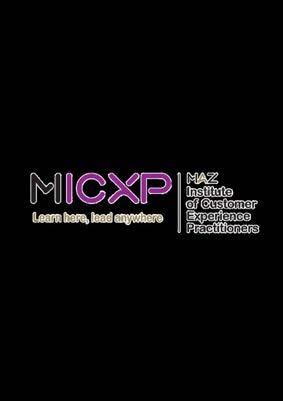




MAZ unveils teen awards event, research survey and logo design competition to engage with youth audiences. By Charity
Rumbidzai Suburare
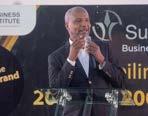
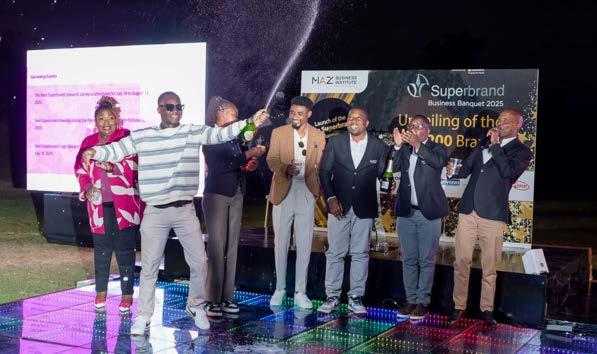
THE MARKETERS Association of Zimbabwe (MAZ) recently launched its highly anticipated Teen Superbrand Awards. The Harare event brought together brand custodians, marketing strategists, industry thought leaders, young entrepreneurs and a wide network of partners to celebrate innovation, brand equity and youth engagement in marketing.
Gillian Rusike, Executive Secretary of MAZ, officiated at the occasion and emphasised the importance of leveraging consumer insights and
targeted marketing campaigns to effectively connect with the youth demographic.
Categories reflect the interests of Zimbabwe youth ›
Tariro Muchena, General Manager Marketing at Econet Wireless Zimbabwe, was the guest of honour and keynote speaker. In her address, she
urged marketers to develop authentic, culturally relevant and emotionally resonant marketing strategies that foster brand loyalty among Generation Z and Millennials.
“Our youth are not just the consumers of tomorrow, they are the consumers of today,” Mrs Muchena stated.
“To truly engage this vibrant demographic, we must craft differentiated value propositions, employ innovative digital marketing tactics, and build authentic brand storytelling that speaks their language and reflects their realities.”
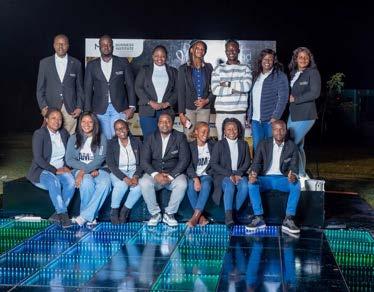
The Teen Superbrand Awards will feature a variety of categories that reflect the diverse interests and passions of Zimbabwe’s youth. They include fashion, music, educational institutes, entertainment, and internet service providers.
These categories recognise brands and institutions that have made significant impacts in their respective fields, resonating with young people and shaping cultural trends.
The awards aim to celebrate excellence across these sectors and inspire continued innovation to meet the evolving tastes of the youth demographic.
The awards ceremony is scheduled to take place during the Marketers Convention in October 2025.
This prestigious event will serve as a platform to recognise brands that have successfully employed innovative marketing mix elements to achieve relevance and resonance with youth consumers.
It also offers a prime opportunity for brand positioning and the
strengthening of brand loyalty within the youth segment.
The wider aim is to motivate young entrepreneurs and brand managers to implement youth-centric marketing strategies, leverage influencer marketing, social media engagement, and experiential marketing to build authentic connections.
Other highlights of the recent launch event in Harare were the announcement of the upcoming Teen Superbrand Research Survey and the launch of the Teen Superbrand Logo Design Competition for teenagers.
The research survey runs from 14 July to 14 August 2025 and will gather actionable consumer insights, understand brand perception and awareness levels, and identify emerging trends within the youth segment. The data will be instrumental in shaping future brand positioning, brand equity measurement, and targeted marketing strategies.
The logo design competition ran
from 16 June to 16 July 2025. This co-creation activity encourages youth participation in brand identity development, fostering user-generated content and brand advocacy.
In addition, the winning logo will be integrated into future branding campaigns, enhancing brand recognition and emotional engagement among young audiences.
Enia Zimunya, Head of Operations at MAZ, encouraged all attendees to leave with a renewed commitment to bold innovation, disruptive thinking and marketing excellence. She emphasised that these efforts should go beyond “making noise” and instead focus on creating meaningful impact through a unified approach.
MAZ also runs an annual ‘Zimbabwe’s Top 200 Superbrands event. The Superbrand concept is an international concept that has been adopted in Zimbabwe since 2009. It identifies and pays tribute to exceptional brands by recognising, rewarding and reinforcing leading brands, be they local or international. The Marketers Association of Zimbabwe is a founder member of the African Marketing Confederation.
Charity Rumbidzai Suburare is Executive Assistant to the CEO and Corporate Communications Executive at the Marketers Association of Zimbabwe.
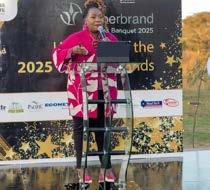
› Thebe Ikalafeng presenting the 2025 Brand Africa rankings in
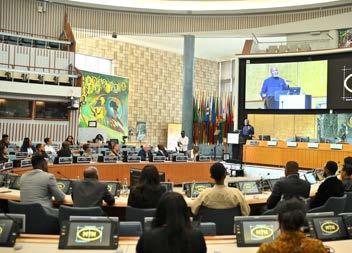
to decline.
BRAND AFRICA, IN partnership with African Business and the Economic Commission for Africa, recently unveiled the results of the 15th annual ‘Brand Africa 100: Africa’s Best Brands’ rankings. The announcement was made at the historic Africa Hall in Addis Ababa, Ethiopia – the birthplace of the Organisation of African Unity (OAU), now the African Union (AU). The 2025 rankings reveal a stark disconnect between rising African optimism and declining brand loyalty. While 68% of Africans express belief in Africa, up from 64% in 2024, only 11% of the top 100 most admired brands are African – a historic low, down from 14% in 2024.
The rankings are based on a panAfrican survey conducted across 31 countries and in eight languages.
“This drop underscores the urgent challenge for homegrown brands to convert belief into consumer commitment, and Africans to support made-in-Africa brands,” the latest report states.
“The research reflects a changing brand landscape driven by Africa’s
youthful population, expanding cultural influence, and growing geopolitical engagement with global blocs such as the G20 and BRICS+.”
Among the highlights:
● Nike retains its top position as the most admired brand overall in Africa for the 8th consecutive year, with a relatively unchanged Top 10.
● MTN (South Africa) and Dangote (Nigeria) are the top African brands by spontaneous and aided recall, respectively.
● MTN is the top brand contributing to a better Africa and for doing good for society and the environment.
● Bathu (SA) is the number one most admired apparel brand.
● Standard Bank (SA) is the most admired financial ser vices brand.
● Nike leads among Gen Z and Millennials, while Samsung leads for Gen Z and Baby Boomers.
● BBC is the number one media brand overall, while DStv is the number one African media brand.
“It is disappointing to see the sharp drop in African brands, which mirrors the ranking of non-African nations as the most influential in Africa,”
says Thebe Ikalafeng, Founder and Chairman of Brand Africa.
“It’s a wake-up call for Africa – and a barometer of the continent’s lagging industrialisation agenda. It’s not enough for Africans to say they believe in the continent – they must buy madein-Africa. For that to happen, African brands must invest in R&D, continue to innovate, deliver quality, and use authenticity as a differentiator.”
In his keynote address, the United Nations Under-Secretary-General and Executive Secretary of the Economic Commission for Africa, Claver Gatete, said Brand Africa aligns with the ECA’s mission to promote inclusive industrialisation, regional integration and private sector-led growth.
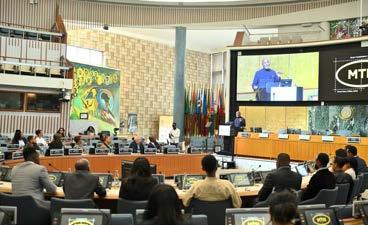
ABRAND AFRICA, EM parceria com a African Business e a Comissão Económica para África, revelou recentemente os resultados da 15ª edição anual da ‘Brand Africa 100: As Melhores Marcas de África”. O anúncio foi feito no histórico Africa Hall em Adis Abeba, na Etiópia, o local de nascimento da Organização de Unidade Africana (OUA), actualmente a União Africana (UA).
As classificações de 2025 revelam uma forte desconexão entre o crescente optimismo africano e o declínio da lealdade à marca. Embora 68% dos africanos expressem a sua crença em África, contra 64% em 2024, apenas 11% das 100 marcas mais admiradas são africanas, um mínimo histórico, contra 14% em 2024.
As classificações baseiam-se num inquérito pan-africano realizado em 31 países e em oito línguas.
“Esta queda sublinha o desafio urgente para as marcas nacionais de
converterem a crença no compromisso dos consumidores e para os africanos apoiarem as marcas made-in-Africa”, afirma o último relatório.
“A pesquisa reflecte um cenário de marca em mudança, impulsionado pela população jovem de África, pela expansão da influência cultural e pelo crescente envolvimento geopolítico com blocos globais como o G20 e o BRICS+.”
Entre os destaques:
● A Nike mantém a sua posição como a marca mais admirada em África pelo 8º ano consecutivo, com um Top 10 relativamente inalterado.
● A MTN (África do Sul) e a Dangote (Nigéria) são as principais marcas africanas em termos de recordação espontânea e assistida, respectivamente.
● A MTN é a marca número um que contribui para uma África melhor e para fazer o bem à sociedade e ao ambiente.
● A Bathu (SA) é a marca de vestuário número um mais admirada.
● O Standard Bank (SA) é a marca de ser viços financeiros mais admirada.
● A Nike lidera entre a Geração Z e os Millennials, enquanto a Samsung lidera para a Geração Z e os Baby Boomers.
“É decepcionante ver a queda acentuada das marcas africanas, que reflecte a classificação das nações não africanas como as mais influentes em África”, afirma Thebe Ikalafeng, fundador e presidente da Brand Africa.
«É uma chamada de atenção para África e um barómetro do atraso da agenda de industrialização do continente. Não basta que os africanos digam que acreditam no continentetêm de comprar made-in-Africa. Para que isso aconteça, as marcas africanas devem investir em I&D, continuar a inovar, oferecer qualidade e utilizar a autenticidade como um factor de diferenciação.»
No seu discurso de abertura, o Subsecretário-Geral das Nações Unidas e Secretário Executivo da Comissão Económica para África, Claver Gatete, afirmou que a Marca África se alinha com a missão da CEA de promover a industrialização inclusiva, a integração regional e o crescimento liderado pelo sector privado.
três principais marcas (Global):
As três principais marcas (apenas em África):
Dangote Grupo Azam (Tanzânia)
Deeper, better and more efficient ports will help Africa to grow its international trade capability and take better advantage of export opportunities. By
Mike Simpson.
AFRICA IS EMBARKING
on what promises to be a significant journey of industrialisation and economic integration, with its ports playing a central role in the economic and social development of its 54 nations.
Given that the World Bank estimates more than 80% of global merchandise trade by volume is transported via sea routes, ports are clearly a vital cog in the continent’s supply chain. It is not only about the export of commodities, but the import and export of manufactured goods and other products.
And, while Africa’s supply chain and logistics infrastructure has been notoriously challenging, much is now being done to take advantage of the economic potential of its ports and shipping sector. This will benefit not only coastal countries, but hopefully those in the landlocked hinterland, which face addition challenges in trading with other parts of Africa and the rest of the world.
“Investing in infrastructure is investing in Africa’s future. It strengthens local industries, attracts private investment, and provides the foundation for stable and self-sustaining growth,” emphasised the Regional Managing Director for Africa and Europe at global port and terminal operator APM Terminals, Igor van den Essen, recently.
He was speaking at the Africa Chief Executive Officers Forum held in Abidjan, Côte d’Ivoire, during which he noted that economic development is directly linked to robust port infrastructure.
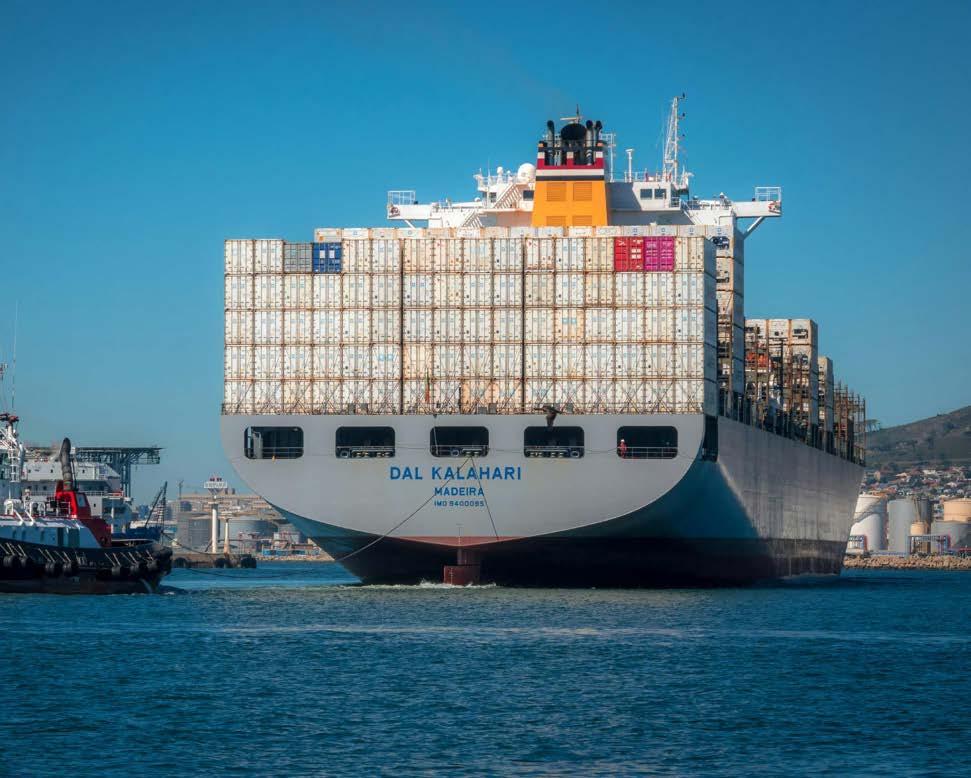
The following are among the port development projects taking place across Africa.
A US$250-million project to upgrade and modernise a key terminal at the Port of Luanda in Angola is progressing, with the recent appointment of contractors to design and build the necessary infrastructure.
On completion – currently scheduled for the first quarter of 2027 – the Noatum Ports Luanda Terminal will be transformed into a modern general cargo, container, and roll-on/roll-off (RoRo) vehicle facility.
The Port of Luanda handles approximately 76% of Angola’s container and general cargo, in addition to serving as a maritime supply chain gateway for neighbours such as the near-landlocked Democratic Republic of the Congo (DRC) and landlocked Zambia.
Better import-export facilities and supply chain infrastructure are strategically vital as Angola is about to join the 13-member Southern African Development Community (SADC) Free Trade Area and is in the process of diversifying its oil-based economy to place more emphasis on trade, manufacturing, agriculture and fisheries.
Banana Port in the Democratic Republic of Congo, which is being hailed as a transformative project that will reshape the trade and logistics landscape of the DRC, is continuing to move forward with its development to make it the country’s first deepwater container port.
The port is located near the mouth of the Congo River, in Kongo Central province, and when operational will supersede the port of Matadi, which lies 150km upstream of the Congo River.
Currently, 90% of the DRC’s imports and exports of containers and general cargo is handled by Matadi, which has limitations on the size of ships it can
accommodate due to the Congo River’s depth and width.
The efficiencies that will be created when Banana Port becomes operational are expected to cut the cost of trade in DRC by 12%, according to British International Investment (BII), the UK’s development finance institution and impact investor.
BII is a minority investor in the new port, with the major investor being DP World. The latter is a global logistics company based in Dubai. It specialises in cargo logistics, port terminal operations, maritime services and free trade zones.
Africa Global Logistics, which operates the country’s main port, plans to invest over $67-million in inland logistics over the next five years to boost its position as a transport hub and gateway for landlocked West African nations
The company plans to establish operational hubs across Côte d’Ivoire, Regional Director Asta-Rosa Cisse told the Reuters news agency.
As well as operating Abidjan’s main port, Africa Global Logistics handles shipments to and from landlocked neighbours Burkina Faso and Mali.
“Abidjan suffers from centralisation, with everything converging on the port,” Cisse commented.
The country’s National Port Authority plans a $200-million bulk terminal at Monrovia’s Freeport to reduce import costs for commodities like rice and cement.
Currently, the lack of a specialised terminal leads to high demurrage charges (charges levied for the delayed removal of goods from a port). This impacts consumer prices, comments Trendtype, the emerging markets consultancy.
The ports authority is developing a Port Master Plan to modernise infrastructure and improve efficiency. Regulatory discussions are ongoing with ArcelorMittal regarding port usage
fees, aiming to ensure fair contributions to Liberia’s economy.
The Tanger Med Port Complex, already the leading container port in Africa and the Mediterranean, is set for further expansion which will boost the country’s trade capabilities and enhance supply chain infrastructure in the Maghreb region of Africa.
Once completed, the new expansion will enable the port complex to, among other things, increase its truck-handling capacity to more than a million vehicles annually – up from the existing capacity of around 500,000 trucks.
In addition, it will support greater export growth in the agribusiness and industrial sectors, and further reinforce trade links between the region and Europe.
DP World recently announced a $165-million expansion of the container terminal at the Port of Maputo.
The planned upgrade in Maputo will see container handling capacity almost double, while the quay length will be extended from 308m to 650m. Additional investments will provide 715 reefer plugs (a specialised electrical plug and socket designed for connecting refrigerated containers to a power source), up from 450, to support Mozambique’s agricultural export strategy.
These developments form part of a broader effort to position Maputo as a primary access point for landlocked neighbours such as Zimbabwe, Eswatini, and northern South Africa.
Phase One of the Maputo project, which commenced in January 2025, includes expanding the container yard by 6.48 hectares, increasing berth depth from 12 to 16 metres, and installing advanced equipment –including three ship-to-shore cranes capable of handling Panamax (ships capable of transiting the Panama Canal) and Post-Panamax vessels
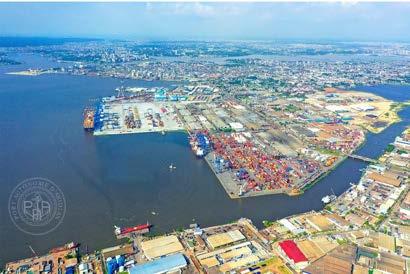
(ships that are wider than the Panama Canal lock dimensions).
These infrastructural enhancements are expected to increase the port’s annual capacity to 54-million tonnes by 2058, up from 37-million tonnes in 2024.
Construction of the US$1.2-million Port of Ndayane has commenced and, according to some industry commentators, is poised to reshape West African trade. Located around 50km south of the capital city of Dakar, the new deepwater facility should alleviate pressure on the congested Port of Dakar and accommodate the world’s largest vessels with an 18-metre draft.
Phase One of the Port of Ndayane project will consist of an 840-metre quay and a 5km channel, with a capacity of 1.2-million TEUs annually.
A TEU is a unit of measurement used to quantify the capacity of a container ship or the volume of cargo it can carry.
Phase two of the port development will see an additional 410-metre quay constructed.
In Tunisia, there is pressure to
re-invigorate the stalled Enfidha deepwater port project about 40km north of Sousse, a city located on the Gulf of Hammamet, which is a part of the Mediterranean Sea. It is about 100km from the capital, Tunis.
Enfidha has been conceived as a large-scale maritime complex designed to include a deepwater port and a free economic zone. It is strategically located near major international shipping lanes.
In May 2025, the World Bank issued a report on the Tunisian economy, in
which it highlighted the significant economic potential of improving Tunisia’s port system.
The report estimates that enhancing port connectivity and reducing dwell times (the time a container is stationary at a specific location) could boost GDP by 4-5% within three to four years.
“Better connectivity, especially through improved port logistics, can be a powerful engine for job creation and economic growth,” said Alexandre Arrobbio, World Bank Country Manager for Tunisia.
Comments ‘African Leadership Magazine’ in a March 2025 article:
“Africa’s ports are undergoing significant transformation. Investments in port expansion and digitalisation are surging. The Lekki deepsea port in Nigeria, operational since 2023, is expected to contribute $360-billion to the economy over its lifetime.
Meanwhile, Kenya’s Lamu port … aims to enhance regional connectivity, facilitating trade between East and Central Africa.
“Furthermore, expansions at Ghana’s Tema port and Côte d’Ivoire’s Abidjan port are boosting Africa’s competitiveness in global trade.”
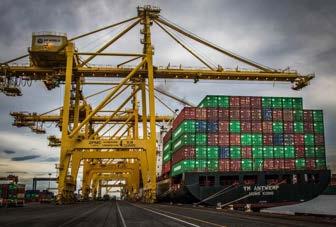
infra-
A existência de portos mais profundos, melhores e mais eficientes ajudará África a aumentar a sua capacidade de comércio internacional e a tirar o máximo proveito das oportunidades de exportação. Por Mike Simpson.
AÁFRICA ESTÁ A embarcar no que promete ser uma jornada significativa de industrialização e integração económica, com os seus portos a desempenharem um papel central no desenvolvimento económico e social das suas 54 nações.
Dado que, segundo o Banco Mundial, mais de 80% do volume do comércio mundial de mercadorias é transportado por via marítima, os portos são claramente uma engrenagem vital na cadeia de abastecimento do continente. Não se trata apenas da exportação de mercadorias, mas da importação e exportação de produtos manufacturados e outros produtos.
E, embora a cadeia de abastecimento e as infra-estruturas logísticas de África tenham sido notoriamente difíceis, muito está agora a ser feito para tirar o proveito do potencial económico dos seus portos e sector marítimo. Isto beneficiará não só os países costeiros, mas também, esperamos, os países do interior sem litoral, que enfrentam desafios adicionais no comércio com outras partes de África e do resto do mundo.
“Investir em infra-estruturas é investir no futuro de África. Fortalecem as indústrias locais, atraem o investimento privado e fornecem as bases para um crescimento estável e auto-sustentado”, sublinhou recentemente o DirectorGeral Regional para África e Europa do
operador global de portos e terminais
APM Terminals, Igor van den Essen.
O dirigente falava no Fórum dos Directores Executivos de África, realizado em Abidjan, na Costa do Marfim, durante o qual observou que o desenvolvimento económico está directamente ligado a infra-estruturas portuárias robustas. Entre os projectos de desenvolvimento portuário em curso em África, contam-se os seguintes.
ANGOLA
Um projecto de 250 milhões de dólares para melhorar e modernizar um terminal chave no Porto de Luanda, em Angola, está a avançar, com a recente nomeação de empreiteiros para conceber e construir as infra-estruturas necessárias.
Após a sua conclusão, actualmente prevista para o primeiro trimestre de 2027, o Terminal de Luanda da Noatum Ports será transformado numa moderna instalação de carga geral, contentores e veículos roll-on/roll-off (RoRo).
O Porto de Luanda movimenta cerca de 76% dos contentores e da carga geral de Angola, para além de servir de porta de entrada da cadeia de abastecimento marítimo para países vizinhos como a República Democrática do Congo (RDC), quase sem litoral, e a Zâmbia, sem litoral.
Melhores instalações de importaçãoexportação e infra-estruturas da cadeia de abastecimento são estrategicamente

vitais, uma vez que Angola está prestes a aderir à zona de comércio livre da Comunidade de Desenvolvimento da África Austral (SADC), composta por 13 membros, e está a diversificar a sua economia baseada no petróleo para dar mais ênfase ao comércio, à indústria transformadora, à agricultura e às pescas.
REPÚBLICA DEMOCRÁTICA DO CONGO
O Porto de Banana, na República Democrática do Congo, que está a ser considerado um projecto transformador que irá remodelar o panorama comercial e logístico da RDC, continua a avançar com o seu desenvolvimento para se tornar o primeiro porto de contentores de águas profundas do país.
O porto situa-se perto da foz do rio Congo, na província do Kongo Central, e, quando estiver operacional, substituirá o porto de Matadi, que se situa 150 km a montante do rio Congo.
Actualmente, 90% das importações e exportações de contentores e carga geral da RDC são tratadas pelo porto de Matadi, que tem limitações quanto à dimensão dos navios que pode receber devido à profundidade e largura do rio Congo.
Espera-se que as eficiências que serão criadas quando o Porto de Banana estiver operacional reduzam o custo do comércio na RDC em 12%, de acordo com a British International Investment (BII), a instituição britânica de financiamento do desenvolvimento e investidor de impacto.
A BII é um investidor minoritário no novo porto, sendo o principal investidor a DP World. Esta última é uma empresa de logística global sediada no Dubai. É especializada em logística de carga, operações de terminais portuários, serviços marítimos e zonas de livre comércio.
A Africa Global Logistics, que explora o principal porto do país, planeia investir mais de 67 milhões de dólares em
logística terrestre nos próximos cinco anos para reforçar a sua posição como centro de transportes e porta de entrada para os países da África
Ocidental sem litoral
A empresa planeia estabelecer centros operacionais em toda a Costa do Marfim, disse o Director Regional AstaRosa Cisse à agência noticiosa Reuters. Para além de operar o principal porto de Abidjan, a Africa Global Logistics trata de carregamentos de e para os vizinhos sem litoral Burkina Faso e Mali.
“Abidjan sofre de centralização, com tudo a convergir para o porto”, comentou Cisse.
A Autoridade Portuária Nacional do país planeia construir um terminal de granéis no valor de 200 milhões de dólares no porto livre de Monróvia, a fim de reduzir os custos de importação de produtos de base como o arroz e o cimento.
Actualmente, a falta de um terminal especializado conduz a elevadas taxas de sobreestadia (taxas cobradas pelo atraso na retirada das mercadorias de um porto). Isto tem impacto nos preços ao consumidor, comenta a Trendtype, a consultora para os mercados emergentes.
A autoridade portuária está a desenvolver um Plano Director Portuário para modernizar as infra-estruturas e melhorar a eficiência. Estão em curso discussões regulamentares com a ArcelorMittal sobre as taxas de utilização do porto, com o objectivo de assegurar uma contribuição justa para a economia da Libéria.
MARROCOS
O Complexo Portuário de Tanger Med, que já é o principal porto de contentores em África e no Mediterrâneo, está pronto para uma nova expansão que irá impulsionar as capacidades comerciais do país e melhorar as infra-estruturas da cadeia de abastecimento na região do Magrebe em África.
Uma vez concluída, a nova expansão
permitirá ao complexo portuário, entre outras coisas, aumentar a sua capacidade de movimentação de camiões para mais de um milhão de veículos por ano, acima da capacidade actual de cerca de 500 000 camiões. Além disso, apoiará um maior crescimento das exportações nos sectores agroalimentar e industrial e reforçará ainda mais os laços comerciais entre a região e a Europa.
MOÇAMBIQUE
A DP World anunciou recentemente uma expansão de 165 milhões de dólares do terminal de contentores do Porto de Maputo.
A modernização planeada em Maputo fará com que a capacidade de tratamento de contentores quase duplique, enquanto o comprimento do cais será aumentado de 308m para 650m. Os investimentos adicionais fornecerão 715 tomadas reefer (uma tomada eléctrica especializada concebida para ligar contentores refrigerados a uma fonte de energia), contra 450, para apoiar a estratégia de exportação agrícola de Moçambique. Estes desenvolvimentos fazem parte de um esforço mais amplo para posicionar Maputo como um ponto de acesso primário para vizinhos sem litoral, como Zimbabwe, Eswatini e o norte da África do Sul.
A primeira fase do projecto de Maputo, que teve início em Janeiro de 2025, inclui a expansão do parque de contentores em 6,48 hectares, o aumento da profundidade do cais de 12 para 16 metros e a instalação de equipamento avançado, incluindo três gruas navio-terra capazes de manusear navios Panamax (navios capazes de transitar pelo Canal do Panamá) e Post-Panamax (navios mais largos do que as dimensões da eclusa do Canal do Panamá).
Prevê-se que estas melhorias infraestruturais aumentem a capacidade anual do porto para 54 milhões de toneladas até 2058, contra 37 milhões de toneladas em 2024.

A construção do porto de Ndayane, no valor de 1,2 milhões de dólares, já começou e, de acordo com alguns comentadores do sector, está prestes a remodelar o comércio da África
Ocidental. Localizada a cerca de 50 km a sul da capital Dakar, a nova instalação de águas profundas deverá aliviar a pressão sobre o congestionado Porto de Dakar e acomodar os maiores navios do mundo com um calado de 18 metros.
A primeira fase do projecto do Porto de Ndayane consistirá num cais de 840 metros e num canal de 5 km, com uma capacidade de 1,2 milhões de TEU por ano. Um TEU é uma unidade de medida utilizada para quantificar a capacidade de um navio porta-contentores ou o volume de carga que pode transportar. A segunda fase do desenvolvimento do porto prevê a construção de um cais adicional de 410 metros.
Na Tunísia, há pressões para revigorar o projecto do porto de águas profundas de Enfidha, que se encontra paralisado, a cerca de 40 km a norte de Sousse, uma cidade situada no Golfo de Hammamet, que faz parte do Mar Mediterrâneo. Situa-se a cerca de 100 km da capital, Tunes.
Enfidha foi concebida como um complexo marítimo de grande escala, projectada para incluir um porto de águas profundas e uma zona económica livre. Está estrategicamente localizada perto das principais rotas marítimas internacionais.
Em Maio de 2025, o Banco Mundial publicou um relatório sobre a economia tunisina, no qual salientava o importante potencial económico da melhoria do sistema portuário da Tunísia.
O relatório estima que a melhoria da conectividade portuária e a redução
dos tempos de permanência (o tempo em que um contentor está parado num determinado local) poderiam aumentar o PIB em 4-5% num prazo de três a quatro anos.
“Uma melhor conectividade, sobretudo através de uma melhor logística portuária, pode ser um poderoso motor para a criação de emprego e o crescimento económico”, afirmou Alexandre Arrobbio, Gestor do Banco Mundial para a Tunísia.
Comentários ‘African Leadership Magazine’ num artigo publicado em Março de 2025:: “Os portos de África estão a passar por uma transformação significativa. Os investimentos na expansão dos portos e na digitalização estão a aumentar. Prevê-se que o porto de águas profundas de Lekki, na Nigéria, operacional desde 2023, contribua com 360 mil milhões de dólares para a economia durante o seu período de vida. Entretanto, o porto de Lamu, no Quénia, ... visa melhorar a conectividade regional, facilitando o comércio entre a África Oriental e Central.
“Adicionalmente, as expansões do porto de Tema, no Gana, e do porto de Abidjan, na Costa do Marfim, estão a aumentar a competitividade de África no comércio mundial.”

Nigeria reportedly has less than 4% of its cold chain capacity requirement. Much of Africa faces a similar challenge.
Nigerian cold chain logistics are causing significant losses of total food production due to postharvest spoilage, according to a recent report published by Business Day Nigeria newspaper and various other local news media outlets. The report references the U.S. International Trade Administration.
The newspaper quotes Alexander Isong, President of the Organisation for Technology Advancement of Cold Chain in West Africa, as saying: “We have very small, minute, cold rooms that don’t scratch the surface.”
Business Day Nigeria adds that the African Post-Harvest Loss Information System estimates Nigeria loses around 40% of its total food production to postharvest spoilage each year, with fruits and vegetables suffering losses of up to 70%.
Michael Akintese, co-founder of Ecotutu, a cold-chain storage and logistics firm, says Nigeria operates at less than 4% of its cold chain capacity requirement, a shortfall that costs farmers and agribusinesses up to US$4.5-billion annually.
“This gap highlights an investment opportunity in the country’s cold chain sector, valued at approximately $206-million in 2023,” reports Business Day Nigeria
“Potential investments range from automated storage solutions to the manufacturing of plastic crates for fresh produce transport, and the acquisition of cold storage trucks for perishable goods.”
In a blog post published in September

2024, logistics and infrastructure consultancy ALG Global notes that, on average, Africa wastes about 50% of its food due to inefficient supply chain infrastructure, particularly in agriculture.
In sub-Saharan Africa, where over 60% of the population are smallholder farmers, inadequate cold chain facilities worsen this issue. In addition, cold storages for pharmaceutical products often lack the capacity to store vaccines and temperaturesensitive medicines in accordance with World Health Organization guidelines, contributing to a global annual death toll of 1.5-million people from preventable diseases.
“By recognising the critical role of a sustainable cold chain from farm to market, both private and public sectors are increasingly investing in this essential infrastructure in Africa,” ALG Global states.
A report in Logistics Update Africa, specifically examining the situation
in Kenya, notes that cold chain infrastructure at the farm level remains inadequate, especially for smallholder farmers.
“Our biggest challenge is at the production areas, where smallholders lack pre-cooling and storage facilities,” it quotes Okisegere Ojepat, Chief Executive Officer of the Fresh Produce Consortium of Kenya, as saying.
While large farms have their own cold storage facilities, small-scale farmers must rely on aggregation centres to keep produce fresh before transportation. However, the high cost of energy and limited access to green energy solutions make it difficult to establish cold chain infrastructure in rural areas.
To address this, Ojepat emphasised the need for public-private partnerships to invest in solar-powered cold storage units and improve access to refrigerated transport. “Without proper first-mile cooling, we risk compromising the quality of our produce before it even reaches the pack house,” he told Logistics Update Africa

Strategic marketing grounded in human-centred design and evidence is a must for African NGOs. It is central to programme relevance, adoption and scale, writes Fana Abay.
MARKETING IN THE non-profit sector worldwide has evolved far beyond publicity and fundraising. In Africa, it is becoming central to sustainable development, from increasing health service uptake to encouraging sanitation and financial inclusion.
‘Strategic marketing for impact’ means understanding communities deeply, designing interventions around their needs, and using data-driven campaigns to shift behaviours.
This is especially timely as the global funding landscape becomes increasingly unpredictable. Recent developments, such as the freeze in USAID funding, have pressured NGOs to demonstrate both reach and effectiveness.
In such a climate, programmes must deliver measurable value and sustainable behavioural change. Marketing that is strategic, adaptive and rooted in human insight is not a luxury – it is a necessity.
When done well, this approach treats marketing not as an add-on communication tool, but as an integral part of programme design. By aligning social programmes with lived realities, NGOs can achieve greater scale and long-term impact.
This article explores how humancentred design (HCD) reinforces NGO marketing in Africa, supported by studies
in health, WASH (water, sanitation and hygiene) and financial inclusion.
At its core, human-centred design is a creative problem-solving approach that begins with the people you’re designing for, and ends with solutions tailored to their lived experiences. It requires engaging the target community, listening to their needs, and co-creating solutions.
In development contexts, HCD has become a powerful way to solve persistent challenges that top-down programmes often miss. When applied well, it produces tailored, sustainable and impactful interventions through iterative cycles of prototyping and refinement.
As observed in global health programming, inclusive participation leads to better solutions that are more readily adopted and scaled.
Yet, HCD also demands flexibility in timelines, willingness to test and fail, and continual refinement – a shift from conventional programme models. But the payoff is clear: programmes that resonate deeply perform better.
Study 1: Youth-Centred Health –Smart Start, PSI Ethiopia Smart Start is a family planning programme co-created by PSI Ethiopia, a non-profit social marketing
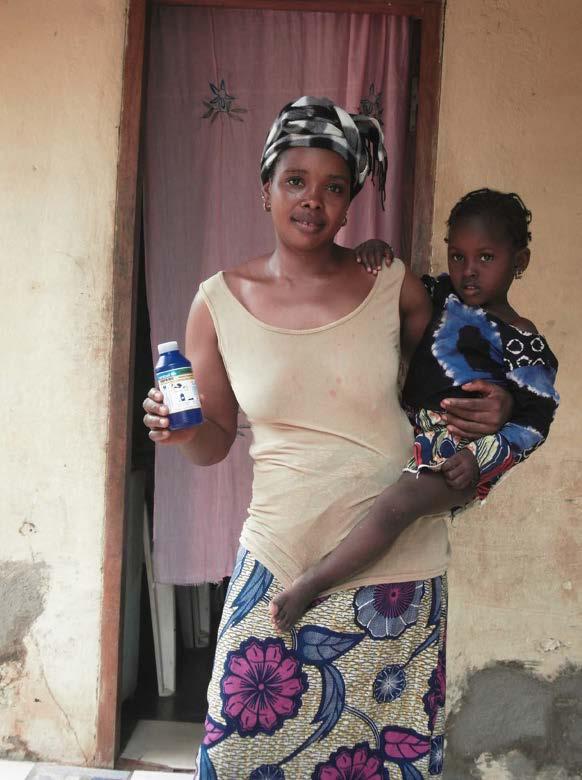
organisation, aimed at married adolescent girls (aged 15-19) and their partners. Using HCD, it reframes family planning as a tool for financial planning and life aspirations.
Rather than generic reproductive health messaging, Smart Start uses tailored visuals, economic framing, and community-based dialogues to engage couples. Through co-creation workshops and localised prototyping, the counselling content was adapted to regional contexts and cultural sensitivities.
The results are striking. During its pilot phase in 2016 to 2020 as part of the Adolescents 360 initiative to increase the use of modern contraceptives among adolescent girls, 75% of girls who received Smart Start counselling voluntarily adopted modern contraception.
As of 2024, nearly 489,000 adolescent girls have become new contraceptive users, with 404,000 continuing users. Over 26,000 health extension workers (community-based healthcare providers who serve as a link between formal healthcare services
and the community) have been trained to scale the programme nationally. Digital innovation further amplified results. A tablet-based counselling app improved client understanding, consistency and adoption rates (74% vs. 64% using the manual version). This reinforces how HCD, paired with digital tools, can enhance programme quality and scale.
Study 2: WASH Behaviour Change –Tinkisso-Antenna, Guinea In Guinea, Tinkisso-Antenna, an NGO that uses a market-based approach to provide access to safe drinking water, applied social marketing to promote household chlorination through a low-cost product called Chlore’C. Instead of giving it away, the NGO branded it attractively, distributed it through retail channels, and used promotional campaigns to drive demand. This market-based strategy led to reduced diarrheal disease rates in pilot areas and eventually expanded nationwide. By 2016, Tinkisso had sold over 700,000 bottles of Chlore’C,
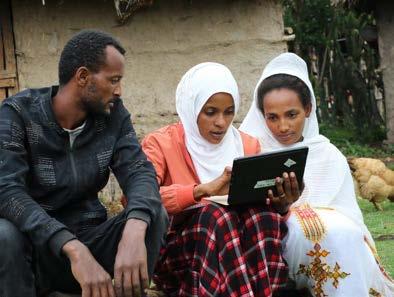

reaching 100,000-plus people with cleaner water access.
Crucially, Tinkisso combined mass media, specifically radio and TV ads, with community-based outreach.
Trained promoters, drama skits and village endorsements boosted trust and message penetration. During the 2014-2015 Ebola outbreak, the programme scaled rapidly, proving its responsiveness.
Sustaining behaviour change, however, remains a challenge. Tinkisso learned that consistent reinforcement and blended messaging – generic hygiene and brand-specific initiatives – were necessary to maintain impact.
Study 3: Financial Inclusion –EquipHER, Nigeria
In Nigeria, the EquipHER initiative by NGX Regulation, the organisation responsible for monitoring activities on the Nigerian stock exchange, and Women’s World Banking, a non-profit dedicated to improving the financial inclusion and economic empowerment of women, aimed to close the gender gap in capital market participation.
As of 2023, only 47% of
Nigerian women had access to formal financial services, versus 58% of men in the country.
Through market research, NGX identified barriers such as low awareness, limited financial literacy and cultural perceptions. EquipHER responded with workshops, storytelling and localised messaging designed to make investing feel relatable.
By using community influencers and relatable platforms, the campaign nudged women to start investing. As a result, women’s investor participation rose by 11.5%, representing tens of thousands of new participants.
EquipHER exemplifies marketing for empowerment, not product sales. It relied on human insight, tracked progress, and aligned messaging with enabling policy changes.
Across all three cases, strategic marketing enabled programmes to:
● Ground interventions in user insights and aspirations.
● Communicate clear value propositions to targeted segments.
● Use trusted influencers and community channels.
● Iterate, track results, and refine based on feedback.
These are not luxuries, but essentials. Behaviour change doesn’t happen with information alone. It needs empathy, relevance and trust. Strategic marketing bridges this gap.
Moreover, Africa’s mobile money revolution illustrates this power. Marketing made digital finance feel trustworthy and useful. Between 2011 and 2021, for example, Sub-Saharan Africa’s financial account ownership more than doubled from 23% to 49%, according to the World Bank (‘The Global Findex Database 2021: Financial Inclusion, Digital Payments, and Resilience in the Age of COVID-19’).
Development partners are increasingly realising this: that programming success depends not just on good ideas but on how well they are marketed and embraced by the people.
In closing, strategic marketing – when grounded in human-centred design and evidence – is no longer optional for NGOs in Africa. It is central to programme relevance, adoption and scale.
The examples of Smart Start, Tinkisso, and EquipHER show that real impact stems from insight, empathy and strategic communication. Not hype or visibility for its own sake, but resonance.
To market for impact, one must listen deeply, speak authentically, and design solutions that communities choose and champion. This is where development meets design and intention becomes transformation.
Fana Abay is Director of Marketing and Communication at Population Service International (PSI) in Ethiopia. She leads a team which designs and implements consumercentric campaigns and digital solutions that connect healthcare services to communities. Abay champions a rigorous and evidencebased approach to market research, analysis and evaluation.
Africa is changing rapidly, so the continent’s marketers must work to shape trends and not merely react to them, Addis Ababa event hears.
THE latest marketing trends in Africa was the focus of a recent networking and learning event held in Addis Ababa by the Ethiopian Marketing Professionals Association (EMPA).
Unpacking the vital topic for all marketers operating on the continent was Helen McIntee-Carlisle, co-founder and President of the African Marketing Confederation. Her presentation was titled ‘Tracing New Marketing Trends in Africa’.
McIntee-Carlisle emphasised to EMPA members and guests that the world is changing, but Africa is changing faster. Therefore, African marketers should work to shape trends and not merely react to them.
She also reminded marketers looking to enter other countries on the continent of a key truth: With 54 countries and 2,000-plus languages, Africa is far from being a homogenous market. Just because a strategy works in one country does not mean it will work in another. Home-grown marketing strategies matter now more than ever. Localisation, nuance and a celebration of difference are essential.
As the African Continental Free Trade Area (AfCFTA) continues to take steps towards achieving its potential, marketers should be preparing for increased cross-border storytelling and more regional campaigns, McInteeCarlisle told the gathering.
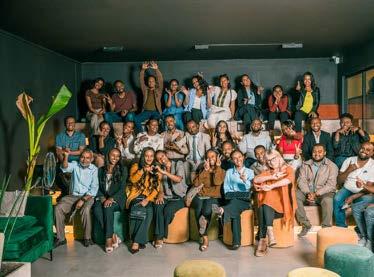
In Africa, just as in so many regions of the world, there is a trust deficit.
Consumers no longer trust many institutions in the way that they used to, so marketers should value trust over hype.
“Relatability is the new credibility,”
McIntee-Carlisle noted. People connect with authentic stories, which is why micro-influencers and user-generated content are on the rise. People don’t want perfection – they want real.
And, while big-name influencers still matter, micro-creators are becoming the bridge between local context and brand relevance.
Turning to Brand Africa, a project initiated by UN Tourism and which the African Marketing Confederation is helping to drive, she noted that tourism and destination marketing was playing a key role in shifting global perceptions about Africa, as well as specific nations within it.
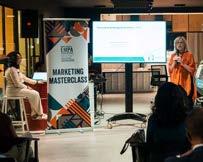
Ethiopia is already on this path, McIntee-Carlisle said, through the work being done by Ethiopian Airlines and the various national reforms taking place. “Africa has stories worth telling – in our own voice,” she stressed. Narrative has the power to change perception at a national level. In conclusion, the gathering noted the importance of creating marketing that feels African. The continent’s marketers should not replicate, but innovate. Not follow, but lead.
The Ethiopian Marketing Professionals Association is a member of the African Marketing Confederation.
Un marketing stratégique fondé sur une conception centrée sur l’humain et sur des données probantes est indispensable pour les ONG africaines. Il est essentiel à la pertinence, à l’adoption et à l’extension des programmes, écrit Fana Abay
LE MARKETING DANS LE secteur à but non lucratif à travers le monde a évolué bien au-delà de la publicité et de la collecte de fonds. En Afrique, il devient essentiel au développement durable, qu’il s’agisse d’accroître le recours aux services de santé, d’encourager l’assainissement et l’inclusion financière.
Le « marketing stratégique pour l’impact » signifie comprendre en profondeur les communautés, concevoir des interventions en fonction de leurs besoins et utiliser des campagnes basées sur les données pour un changement de comportements.
Cela est particulièrement opportun à l’heure où le paysage financier mondial devient de plus en plus imprévisible. Les évolutions récentes, comme le gel du financement de l’USAID, ont poussé les ONG à démontrer à la fois leur portée et leur efficacité.
Dans un tel climat, les programmes doivent apporter une valeur mesurable et un changement de comportement durable. Un marketing stratégique, adaptatif et ancré dans la connaissance humaine n’est pas un luxe, c’est une nécessité.
Lorsqu’elle est bien menée, cette approche considère le marketing non pas comme un outil de communication supplémentaire, mais comme une partie intégrante de la conception du programme. En adaptant les programmes sociaux aux réalités vécues, les ONG peuvent atteindre une plus grande échelle et un impact à long terme.
Cet article explore comment la conception centrée sur l’humain (human-centred design - HCD) renforce le marketing des ONG en Afrique, soutenu par des études sur la santé, l’EAH (eau, assainissement et hygiène) et l’inclusion financière.
METTRE L’HUMAIN AU CENTRE
À la base, la conception centrée sur l’humain est une approche créative de résolution de problèmes qui commence par les personnes pour lesquelles vous concevez et se termine par des solutions adaptées à leurs expériences vécues. Elle nécessite l’implication de la communauté cible, l’écoute de ses besoins et la co-création des solutions. Dans les contextes de développement, la HCD est devenue un moyen puissant

de résoudre des problèmes persistants que les programmes hiérarchisés ne parviennent souvent pas à résoudre. Lorsqu’elle est bien appliquée, elle produit des interventions sur mesure, durables et percutantes grâce à des cycles itératifs de prototypage et de raffinement.
Comme observé dans les programmes de santé mondiale, la participation inclusive conduit à de meilleures solutions qui sont plus facilement adoptées et mises à l’échelle.
Cependant, la HCD exige également une flexibilité dans les délais, une volonté de tester et d’échouer, et un perfectionnement continu, un changement par rapport aux modèles de programmes conventionnels. Mais le résultat est clair : les programmes qui trouvent un écho profond sont plus performants.
Étude 1 : Santé centrée sur les jeunes, Smart Start, PSI Éthiopie
Smart Start est un programme de planification familiale co-créé par PSI Éthiopie, une organisation de marketing
social à but non lucratif, destiné aux adolescentes mariées (âgées de 15 à 19 ans) et à leurs partenaires. En utilisant la HCD, il redéfinit le planning familiale comme un outil de planification financière et d’aspirations de vie. Plutôt que des messages génériques sur la santé reproductive, Smart Start utilise des visuels personnalisés, un cadrage économique et des dialogues communautaires pour impliquer les couples. Grâce à des ateliers de co-création et à un prototypage localisé, le contenu du conseil a été adapté aux contextes régionaux et aux sensibilités culturelles. Les résultats sont remarquables. Au cours de sa phase pilote de 2016 à 2020 dans le cadre de l’initiative Adolescents 360 visant à accroître l’utilisation de contraceptifs modernes chez les adolescentes, 75 % des filles ayant bénéficié de conseils Smart Start ont volontairement adopté une contraception moderne. En 2024, près de 489 000 adolescentes étaient devenues de nouvelles utilisatrices de contraceptifs,


et 404 000 ont continué l’utilisation. Plus de 26 000 agents de vulgarisation sanitaire (prestataires de soins de santé communautaires qui servent de lien entre les services de santé formels et la communauté) ont été formés pour étendre le programme à l’échelle nationale.
L’innovation numérique a encore amplifié les résultats. Une application de conseil sur tablette a amélioré la compréhension, la cohérence et les taux d’adoption des clients (74 % contre 64 % avec la version manuelle). Cela renforce la manière dont la HCD, associée aux outils numériques, peut améliorer la qualité et l’échelle du programme.
Étude 2 : Changement de comportement en matière d’EAH, Tinkisso-Antenna, Guinée En Guinée, Tinkisso-Antenna, une ONG qui utilise une approche basée sur le marché pour fournir un accès à l’eau potable, a appliqué le marketing social pour promouvoir la chloration à domicile grâce à un produit à faible coût appelé Chlore’C.
Au lieu de le distribuer gratuitement, l’ONG l’a commercialisé de manière
attrayante, l’a distribué via des canaux de vente au détail et a utilisé des campagnes promotionnelles pour stimuler la demande.
Cette stratégie basée sur le marché a permis de réduire les taux de maladies diarrhéiques dans les zones pilotes et s’est finalement étendue à l’échelle nationale. En 2016, Tinkisso avait vendu plus de 700 000 bouteilles de Chlore’C, permettant ainsi à plus de 100 000 personnes d’avoir accès à une eau plus propre.
Il est essentiel de noter que Tinkisso a combiné les médias de masse, en particulier les publicités à la radio et à la télévision, avec la sensibilisation communautaire. Des promoteurs formés, des sketches et des recommandations de village ont renforcé la confiance et la pénétration du message. Lors de l’épidémie d’Ebola de 2014-2015, le programme a rapidement évolué, prouvant sa réactivité.
Maintenir un changement de comportement reste toutefois un défi. Tinkisso a appris qu’un renforcement cohérent et des messages mixtes, des initiatives d’hygiène génériques et spécifiques à la marque, étaient
nécessaires pour maintenir l’impact.
Étude 3 : Inclusion financière, EquipHER, Nigéria
Au Nigéria, l’initiative EquipHER de NGX Regulation, l’organisation chargée de surveiller les activités de la bourse nigériane, et Women’s World Banking, une organisation à but non lucratif dédiée à l’amélioration de l’inclusion financière et de l’autonomisation économique des femmes, visaient à combler l’écart entre les sexes en matière de participation au marché des capitaux.
En 2023, seulement 47 % des femmes nigérianes avaient accès à des services financiers formels, contre 58 % des hommes du pays.
Grâce à des études de marché, NGX a identifié des obstacles tels qu’une faible sensibilisation, une éducation financière limitée et des perceptions culturelles. EquipHER a répondu avec des ateliers, des récits et des messages localisés conçus pour rendre l’investissement plus accessible. En utilisant des influenceurs communautaires et des plateformes pertinentes, la campagne a incité les femmes à commencer à investir. En conséquence, la participation des femmes investisseuses a augmenté de 11,5 %, ce qui représente des dizaines de milliers de nouvelles participantes. EquipHER est un exemple de marketing pour l’autonomisation, et non pour la vente de produits.
Elle s’est appuyée sur des connaissances humaines, a suivi les progrès accomplis et a adapté les messages aux changements politiques qui en découlent.
COMME MOTEUR D’IMPACT
Dans les trois cas, le marketing stratégique a permis aux programmes de :
● Fonder les interventions sur les connaissances et les aspirations des utilisateurs.
● Communiquer des propositions de
valeur claires aux segments ciblés.
● Utiliser des influenceurs et des canaux communautaires de confiance.
● Réitérer, suivre les résultats et affiner en fonction des commentaires. Il ne s’agit pas de luxe, mais d’éléments essentiels. Le changement de comportement ne se produit pas uniquement avec l’information. Il nécessite de l’empathie, de la pertinence et de la confiance. Le marketing stratégique comble cette lacune.
De plus, la révolution de l’argent mobile en Afrique illustre ce pouvoir.
Le marketing a permis à la finance numérique de se sentir digne de confiance et utile. Entre 2011 et 2021, par exemple, la possession de comptes financiers en Afrique subsaharienne a plus que doublé, passant de 23 % à 49 %, selon la Banque mondiale (« The Global Findex Database 2021 : « Inclusion financière, paiements numériques et résilience à l’ère de la COVID-19 »).
Les partenaires de développement se rendent de plus en plus compte que
le succès d’une programmation ne dépend pas seulement de bonnes idées, mais aussi de la façon dont elles sont commercialisées et adoptées par la population.
En conclusion, le marketing stratégique, lorsqu’il est fondé sur une conception centrée sur l’humain et sur des données probantes, n’est plus une option pour les ONG en Afrique. Il est essentiel à la pertinence, à l’adoption et à l’extension des programmes.
Les exemples de Smart Start, Tinkisso et EquipHER montrent que l’impact réel découle de la perspicacité, de l’empathie et de la communication stratégique. Il n’est pas question de battage médiatique ni de visibilité pour le plaisir, mais d’une résonance.
Pour commercialiser un impact, il faut écouter attentivement, parler de manière authentique et concevoir des solutions que les communautés choisissent et défendent. C’est ici que le développement rencontre la conception et que l’intention devient transformation.
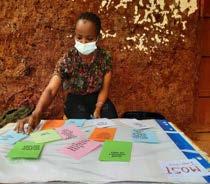
Fana Abay est Directrice du marketing et de la communication chez Population Service International (PSI) en Éthiopie. Elle dirige une équipe qui conçoit et met en œuvre des campagnes centrées sur le consommateur et des solutions numériques qui relient les services de santé aux communautés. Abay défend une approche rigoureuse et fondée sur des données probantes en matière d’études de marché, d’analyse et d’évaluation.
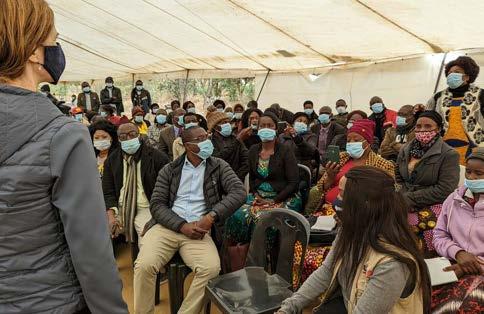
› Une photo de 2022 montrant l’administratrice de l’USAID, Samantha Power, s’adressant à des ONG et à des responsables en Zambie. L’USAID ne fonctionne plus en tant qu’agence distincte
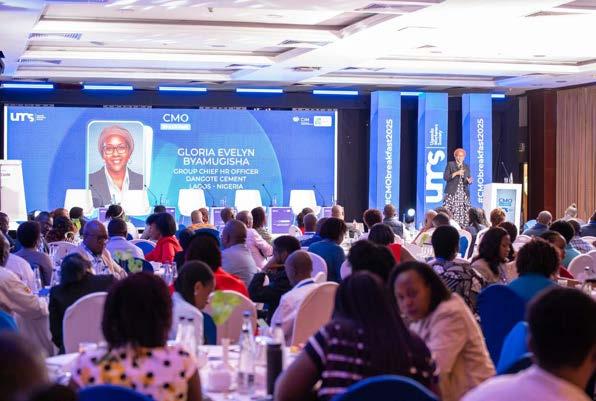
Uganda’s marketers told to ‘master their sphere of influence’ to advance
Annual CMO Breakfast hears that achieving success in the boardroom requires depth and an understanding of your ‘kingdom’. By Danny Kwizera.
MORE THAN 200 marketing leaders and practitioners, representing over 50 brands, gathered at the Kampala Serena Hotel recently for the 2025 edition of the annual CMO Breakfast organised by the Uganda Marketers Society (UMS).
The theme was ‘The Leadership Leap: Positioning Yourself for the Boardroom’, which examined strategies for advancing from senior marketing positions into top executive and board roles that shape business leadership.
Gloria Evelyn Byamugisha, Group Chief HR Officer at Dangote Cement Plc in Lagos, was the keynote speaker and took the attendees on a journey through the evolving demands of leadership, offering a wealth of experience and wisdom gleaned from her extensive career.
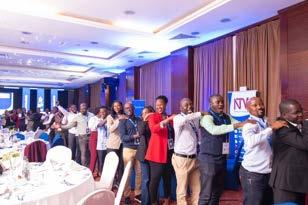
“The leader today must be able to rethink, reinvent and adapt to a world that is constantly shifting,” she said. “A great leader is one who not
only connects with the team but also understands the complexities of the global landscape.”
Byamugisha emphasised the
importance of preparing oneself for the boardroom, urging attendees to reflect on their leadership journey and positioning.
“To succeed in the boardroom, you need depth. It is not just about knowing a little bit of everything, but mastering your sphere of influence,” she explained. “Whether it’s marketing, operations or strategy, understanding your ‘kingdom’ is crucial.”
The session also delved into the challenges of leadership in today’s volatile business environment, and Byamugisha shared a personal anecdote about navigating complex business decisions during a crisis.
“In one of the most trying times, my team and I had to manage business continuity amidst a global shutdown. The decisions we made had farreaching implications, not only for the business but for the lives of thousands of people,” she said.
Byamugisha also highlighted the role of personal preparation in advancing one’s career. “Professional preparation goes beyond technical competence. It includes how you present yourself, communicate and build relationships,” she stressed.
“Trust is the cornerstone of any leadership role, and it must be cultivated through consistency and professionalism.”
In addition to the keynote address, a seasoned panel rich with insight and experience featured Goretti Masadde (CEO of Uganda Institute of Banking and Financial Services), and Hasan Saleh (Managing Director of Multichoice Uganda). The moderator was Remmie Kisakye, CEO of Majestic Brands. Masadde’s story echoed with resilience. From managing multimillion-dollar projects to standing firm in spaces that once doubted her, she underscored a key truth: “You don’t stumble into leadership, you build towards it, step by step, with clarity, courage and character.”
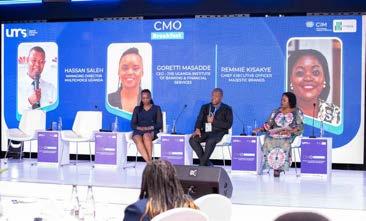
Saleh, on the other hand, took a different route in his leadership journey – one marked by bold, unpopular decisions.
“I’ve had to take downward moves to move forward,” he shared. “Everyone thought I was crazy, but I knew what I was building. I wanted to lead big businesses, and, for that, needed breadth – crisis management, people leadership and cross-border experience. I took the hard road.”
He highlighted the importance of stretching beyond comfort zones, pointing to his selection for an Africa Mobility Programme in 2002. “It wasn’t glamorous. I was earning less than my peers. But I saw the long game – and it paid off.”
In closing, Saleh added a powerful charge: “The future belongs to those who are bold enough to reimagine their role. We need more African experts at the table; not waiting for validation, but offering value.”
According to Kisakye, personal presentation is also key in striking the right impression. “Your appearance matters. Remember to be yourself and keep a close circle of friends,” she stressed. “Build your personal brand the same way you build your other brands.”
PRESIDENT SPEAKS
In her address, Charity Winnie
Kamusiime-Asiimwe, the Uganda Marketers Society President, emphasised the importance of personal connections and how they shape careers.
“I am who I am today because I stand on the shoulders of so many who came before me. Thank you to every shoulder I’ve leaned on. I am not done yet. But everything I am – and everything this Society is – comes from the power of the market, the power of community,” she stated
“We each carry a light. Let no one pass you without feeling its warmth. Let’s be bold in this transition. Let’s transform the lions of our industry – and roar with purpose. Every marketer here matters. You are not just a voice. You are a force. And together, we are rewriting the story of marketing in Uganda.”
The 2025 UMS CMO Breakfast wasn’t just a morning of ideas; it was a moment of transformation. A reset. A declaration that Uganda’s marketing leaders are not just brand stewards –they are boardroom contenders. The Uganda Marketers Society is a member of the African Marketing Confederation (AMC).
Danny Kwizera, MBA, ACIM, is Director of Public Relations and Media for the Uganda Marketers Society.
If we can get AI governance right, there’s a huge opportunity to maximise AI’s potential in the PR industry, writes Candice Burgess-Look

which is likely to be as transformative to human history as was the Industrial Revolution.” This quote from the UK’s former Government Chief Scientific Adviser, Sir Patrick Vallance, is a powerful reminder of the scale and speed of the shift we’re living through.
AI isn’t a fad or gimmick we’ll lose interest in (like social audio platform Clubhouse or non-fungible tokens).
The horse has bolted and there’s no going back.
To give an idea of the extent of global AI adoption, McKinsey & Company’s latest ‘State of AI’ report cites that 78%
of companies globally are using AI in their business operations, with 92% planning to increase investment over the next three years.
To put this further into context, there are 333-million companies worldwide, and 300-million of these organisations are already using or actively exploring AI.
So why is adoption slower in the public relations sector? There’s no shortage of talk amongst the PR profession about AI, but conflicting opinions are creating a slower uptake.
The 2025 ‘Glass House PR Report’, which surveyed firms in at least 15
African countries, found that, while 46% of PR agencies have started integrating AI tools into their processes, widespread adoption across the industry remains in its infancy. Hesitancy and discomfort amongst the public relations and marketing professions about AI is prevalent for several reasons. In addition to more obvious impediments which I touch on later in this article, there’s also the ‘softer obstacles’ to embracing AI at scale.
As communicators, we pride ourselves on crafting authentic messaging and working with integrity – qualities some see as threatened by AI. This is where I believe a large knowledge gap exists. If you learn to work with AI in a way that supports your creative process, rather than replaces it, you’re less likely to fear losing your craft, your voice, or your sense of ownership over your work. And you’ll be far better positioned to outperform those who resist the shift.
If we look at those already experimenting with AI, the benefits are undeniably tangible. Take Bravado, the digital experience agency of South African integrated advertising agency group, Brave Group. It deployed AI to

power financial services group Nedbank’s award-winning ‘We’re for Africa campaign at the end of 2024.
According to Nomthandazo Mbatha, Marketing and Communications Manager for Africa Regions at Nedbank, the bank achieved an 81% reduction in costs and generated over 6.7-million impressions across social platforms. The AI took in a campaign brief and, in one integrated environment, produced a full marketing, internal and external comms strategy alongside creative content, social media posts and production assets. All this was built in just 12 days.
If AI can revolutionise marketing and
PR with this level of efficiency and creativity, its wider adoption in PR seems inevitable.
However, AI tools aren’t equitably accessible or easily integrated. As international PR expert Stephen Waddington notes in his 2024 report, ‘The Use of AI in Corporate Communications and Public Relations’, AI performs well as an administrative support tool for individuals, but the challenge lies in scaling that use across full workflows and teams.
Essentially what he is saying is that anyone with a web browser can make use of an LLM to assist them with a task, but scaling it across workflows
remains a challenge. For now, in a sector like PR, AI proves most effective on an individual level.
In a 2024 study from Reddit and Quora, which identified over 100 individual use cases across six geographic regions, most public relations professionals used AI for relatively simple tasks like brainstorming, drafting content, or editing, which is proof of its value in tackling the mundane. But embedding AI across an organisation’s systems and culture is far more complex. Even with tools like Microsoft CoPilot or Google’s Gemini now integrated into enterprise platforms, there are still practical limitations. For example, In Africa, AI literacy lags global standards, fuelling hesitancy and slower uptake.
Structural barriers also play a role in uptake. I believe key ones are:
● Infrastructure limitations: Despite digital progress, many regions in Africa still face unreliable electricity, limited internet access and insufficient data centres. Without the infrastructure to support highcomputing tools, PR teams can’t fully leverage AI for media monitoring, data analysis or campaign automation.
● Lack of localised AI models: Most AI tools are built on Western datasets and lack cultural or linguistic nuance. With over 2,000 languages spoken across the African continent, generic AI outputs fall short of meeting regionally specific communication needs. For PR professionals, this limits the ability to create relevant localised messaging at scale.
● Ethical and governance gaps: Global AI ethics frameworks – such as those from The United Nations Educational, Scientific and Cultural Organization (UNESCO) focus predominantly on

product development, not communication practice. As a result, PR professionals are left navigating issues like bias, misinformation or copyright infringement without clear guidance, raising reputational and regulatory risks for the brands they represent.
Despite the sluggish and uneven adoption of AI across the PR sector, there are encouraging signs that the industry is beginning to engage more actively. With more PR professionals in Africa now integrating AI into their work, often driven by the need to cut costs in a tough economic climate, we’re halfway there. But if we want to remain competitive and relevant, we need to move quicker.
My company’s own pulse check in South Africa shows that local professionals are using AI for tasks like idea generation, transcription, editing and image creation. The most commonly used tools include ChatGPT, NotebookLM, Jasper, Adobe Firefly and CapCut. Yet concerns persist about flat or inauthentic tone, factual inaccuracies and unresolved ethical questions. This highlights two urgent needs. Firstly, communicators must have a seat at the table where AI policy and

product decisions are being made –particularly when those tools will be used for public-facing content. Secondly, we need structured training. The ‘Global CommTech Report’ reveals that 60% of public relations professionals globally lack an AI policy, while 43% have received no formal training.
To shape responsible AI adoption, organisations, especially in communications, must establish clear AI governance frameworks that define how, when and why AI is used.
This begins with transparency: teams need to speak openly with clients, leadership and staff about acceptable, versus sensitive, data inputs. It’s vital to set boundaries on what can be shared with AI tools to protect client confidentiality and brand integrity.
Trust-building is equally critical. PR professionals must become AI-literate communicators who are able to explain how tools work, identify their limitations and educate clients with clarity.
A key part of this literacy is understanding bias in AI outputs, especially when content risks being culturally tone-deaf or exclusionary.
Because most AI models are trained on Western-centric datasets, African PR practitioners have a duty to push for tools that reflect our languages, values and cultural diversity.
Collaborating with AI developers
to co-create inclusive datasets and context-sensitive models will be central to this mission. Moreover, communicators must remember that AI is an assistant, not a replacement. Human oversight is essential to ensure relevance, nuance and ethical accuracy.
Agencies should extend their responsibility by advising clients on ethical AI use, while also integrating AI training into professional development initiatives.
Lastly, strategic implementation is key. Use AI where it adds value, not simply for the sake of it. Establishing these policies and practices isn’t about limiting innovation, but about providing the compass that ensures AI strengthens rather than weakens trust in communications.
If we can get AI governance right, there’s a huge opportunity to maximise AI’s potential in our industry. Below are just some of the current trends in AI use that PR professionals should be capitalising on:
● Social listening: Tools like Brandwatch, Meltwater, and Talkwalker use AI to monitor online sentiment and flag potential reputation risks in real time. It’s how agile brands like casual-dining

chain
always quick to respond to current events with viral, on-brand messaging.
● AI-Powered search visibility: Google’s new Search Generative Experience is reshaping how PR
professionals must now optimise press releases and blog posts not just for SEO, but for how AI curates and ranks information.
● Real-time translation for global reach: AI tools like DeepL, Whisper AI, and Google Translate now enable

PR teams to run multilingual campaigns with ease. Coca-Cola, for example, uses AI-powered translation to localise messaging across the 200 global regions it operates in, enabling fast and efficient message delivery.
FROM HESITANCE
There’s one more benefit we don’t talk about enough: AI can help us reclaim time.
In a profession known for its fastpaced, ‘always-on’ culture, burnout is a real threat. AI won’t replace the magic of human storytelling, but it can take care of the repetitive and timeconsuming tasks, giving us back space for creativity, strategy – and even a bit of work-life balance.
African PR professionals are at a crossroads. We can wait for perfect, imported regulations. Or we can take the lead. Let’s build our own frameworks that are informed by our context, our values and our communities.
As communicators, we can shape how AI is used and how it is understood. That’s a responsibility worth embracing.
Candice Burgess-Look is the Co-Founder and Director of KOJ Communication, a strategic communications and PR firm working with B2B clients across Africa.
Household income distribution has returned to 2021 levels. Fast-food purchases and eating out continue to steadily decline.
Marketing Research Foundation (MRF) recently released its latest Marketing All Product Survey (known as MAPS), delivering a comprehensive view of the country’s consumer behaviour and media trends.
The foundation says this latest dataset, covering January to December 2024, marks a major milestone for the country’s media and advertising industry by providing a full four-year window into shifting audience patterns, purchasing habits and media consumption.
“With 18 quarterly releases now published since Q3 2020, the MAPS dataset is a strategic resource for advertisers, agencies, media owners and brands seeking to understand and respond to evolving market dynamics,” the MRF states.
With over 20,000 interviews conducted annually by a team of more than 200 field interviewers, MAPS covers all provinces, districts and municipalities. Among the highlights of the latest survey:
● The average age of the population remains 38 years, with a gender split of 52% female and 48% male.
● Household income distribution has returned to 2021 levels, with an average monthly income of R12,100 (US$673). Seventy-seven percent of households earn less than R12,000 while 6% earn more R40,000 ($2,226).
● The economically active population stands at 38%, with unemployed at 27% and non-active at 35%.
● Television: 60% of South Africans watched TV weekly, with 17% spending more than 20 hours per week on the medium. DStv (paid subscription) penetration is at 41%.
● Radio: 45% listened to radio weekly, with commercial stations attracting 17-million listeners and community stations 4-million. Notably, 11% of the population spends more than 20 hours per week listening to radio.
● Streaming and On-Demand: 21% of people have access to on-demand streaming services, Netflix (78%), Showmax (47%), and interestingly a 12% access to YouTube (paid for). Streaming penetration has increased by 139% since 2021.
● Social Media: Social media penetration has reached 73%, up
from 50% in 2021. Facebook remains the most visited video content viewing platform (74%), followed by TikTok (38%), YouTube (27%), and Instagram (20%). A quarter of South Africans spend more than 20 hours per week on social media.
● Internet Access: 77% accessed the internet weekly, with 4.3-million households now having fixed internet access, a 37% increase since 2021.
● The average monthly spend on groceries and toiletries has steadily increased, with apparel spend remaining more volatile.
● Brand loyalty remains strong in cosmetics and toiletries, with 37% and 33% of consumers respectively always buying the same brands. Groceries saw a slight decline in loyalty to 29%, down from 33% in 2021.
● There has been a 25% decline in weekly fast-food purchases and a 29% decline in eating out since 2021, reflecting economic pressures and changing consumer priorities.
Readers of our Digital Edition can access the MAPS launch presentation here



